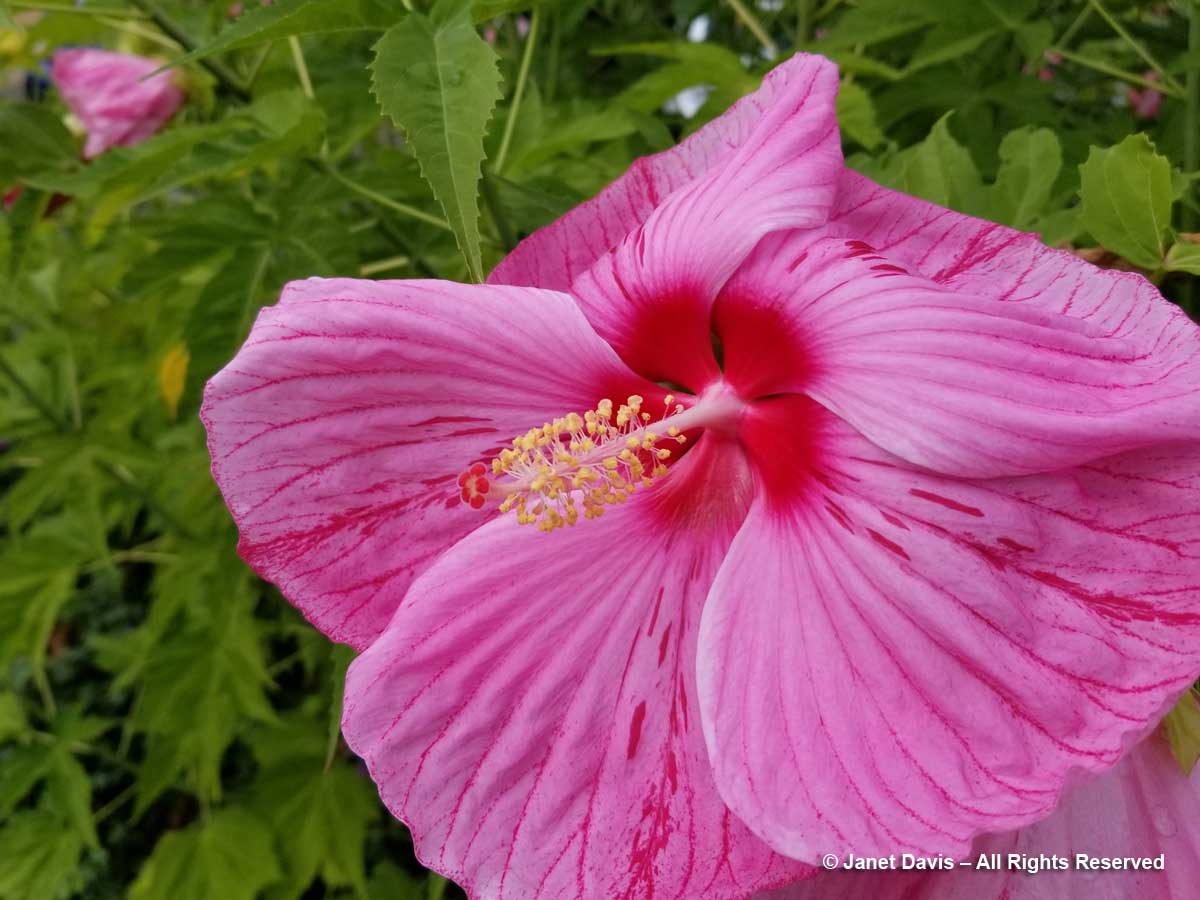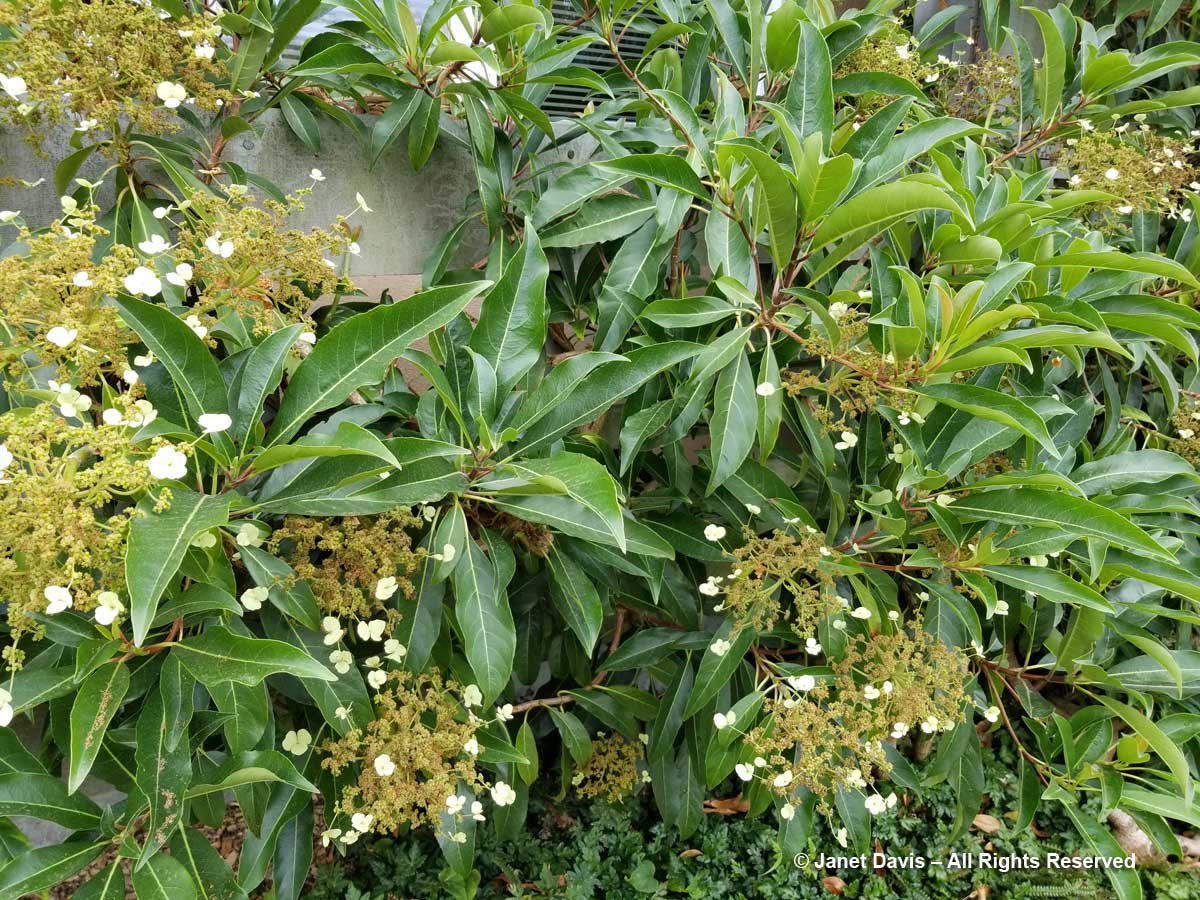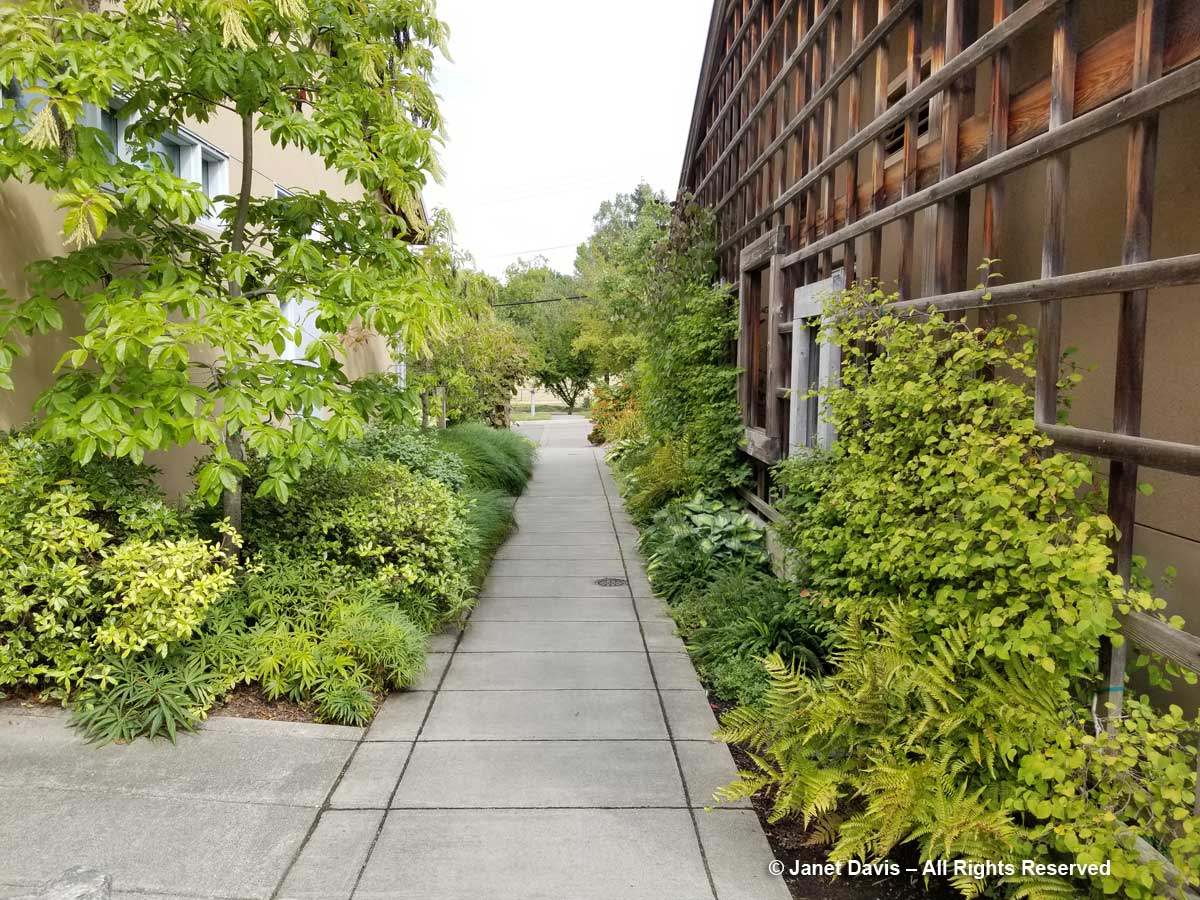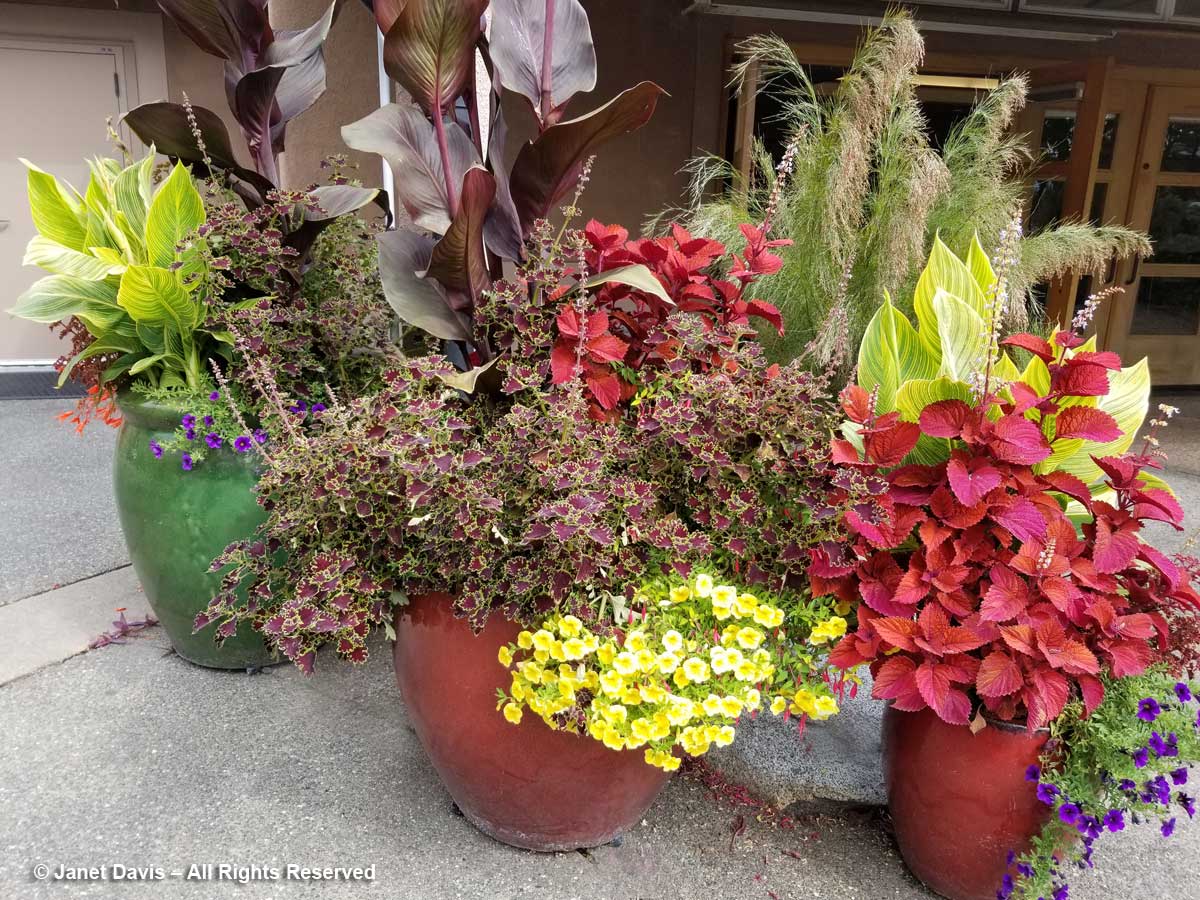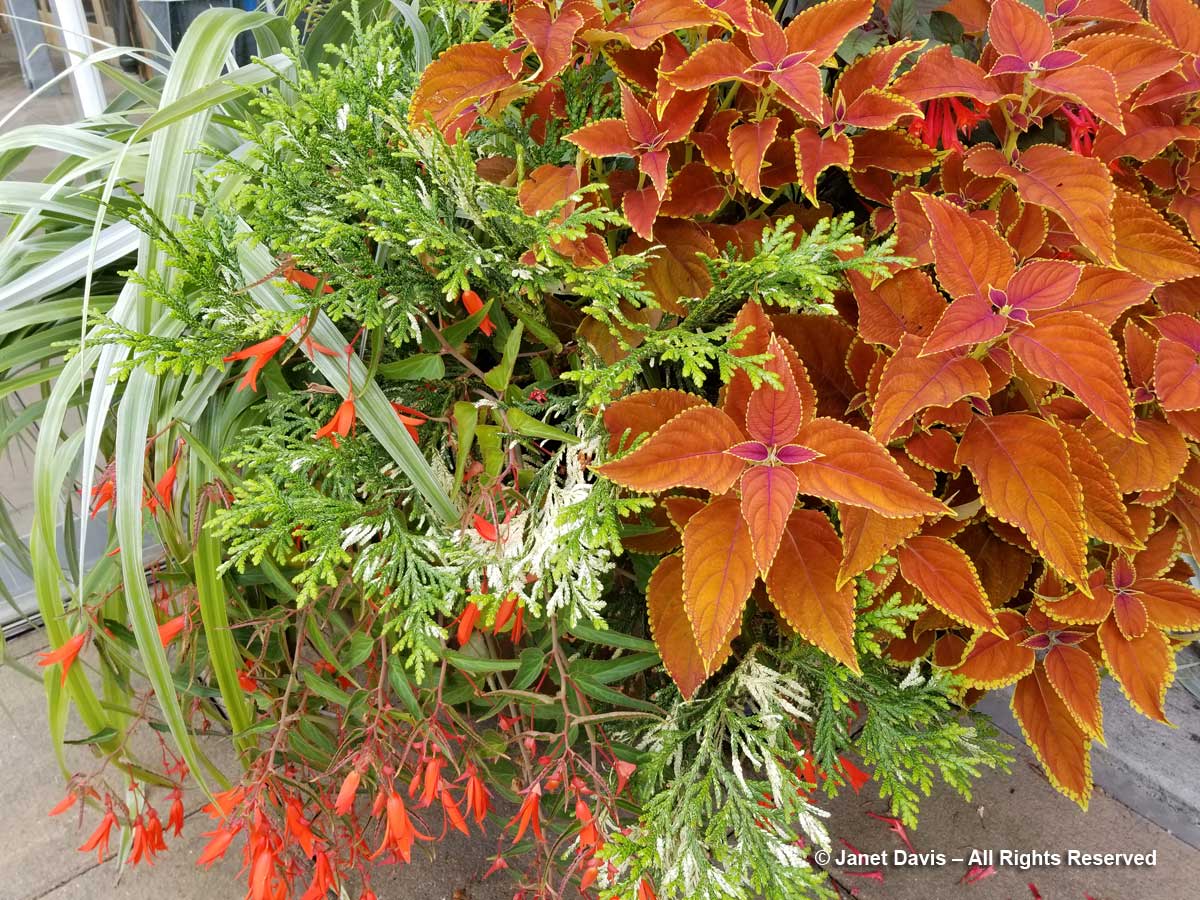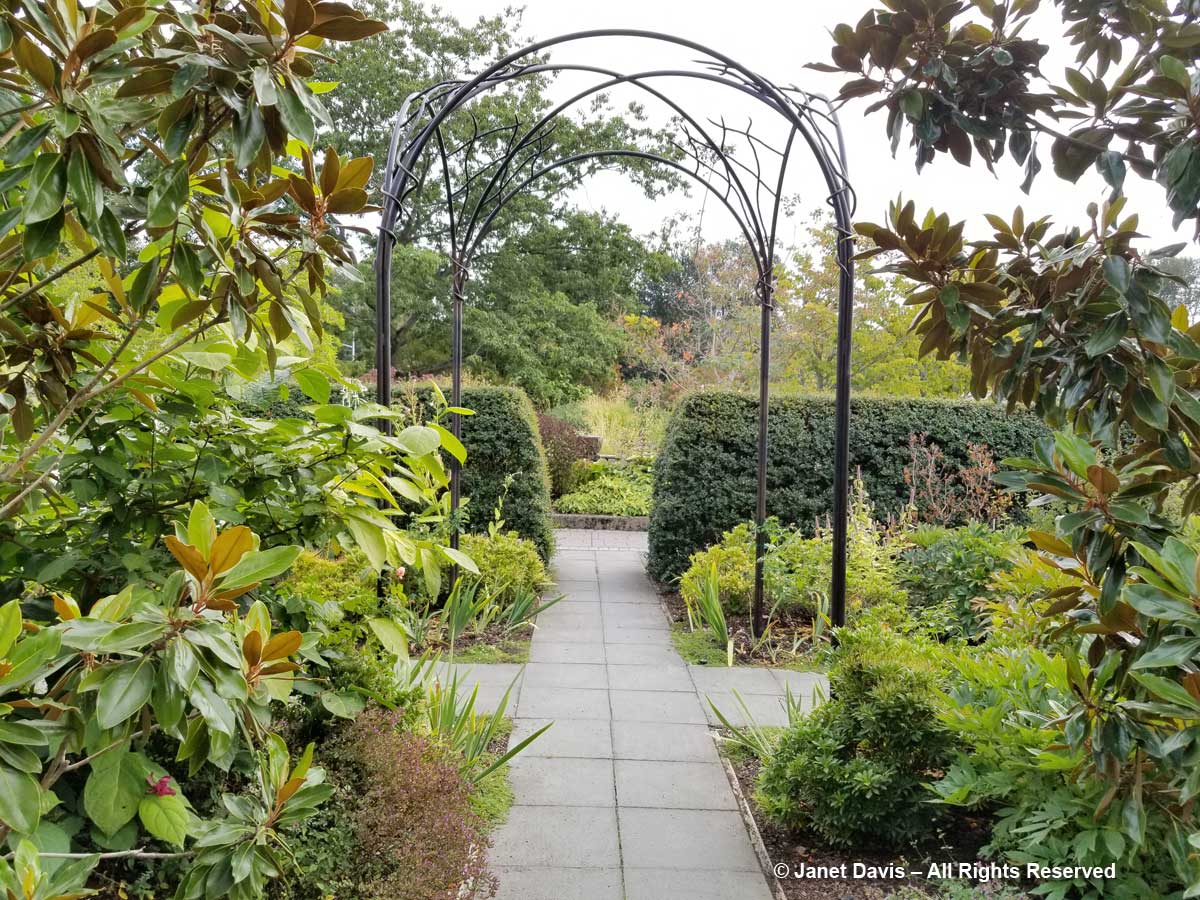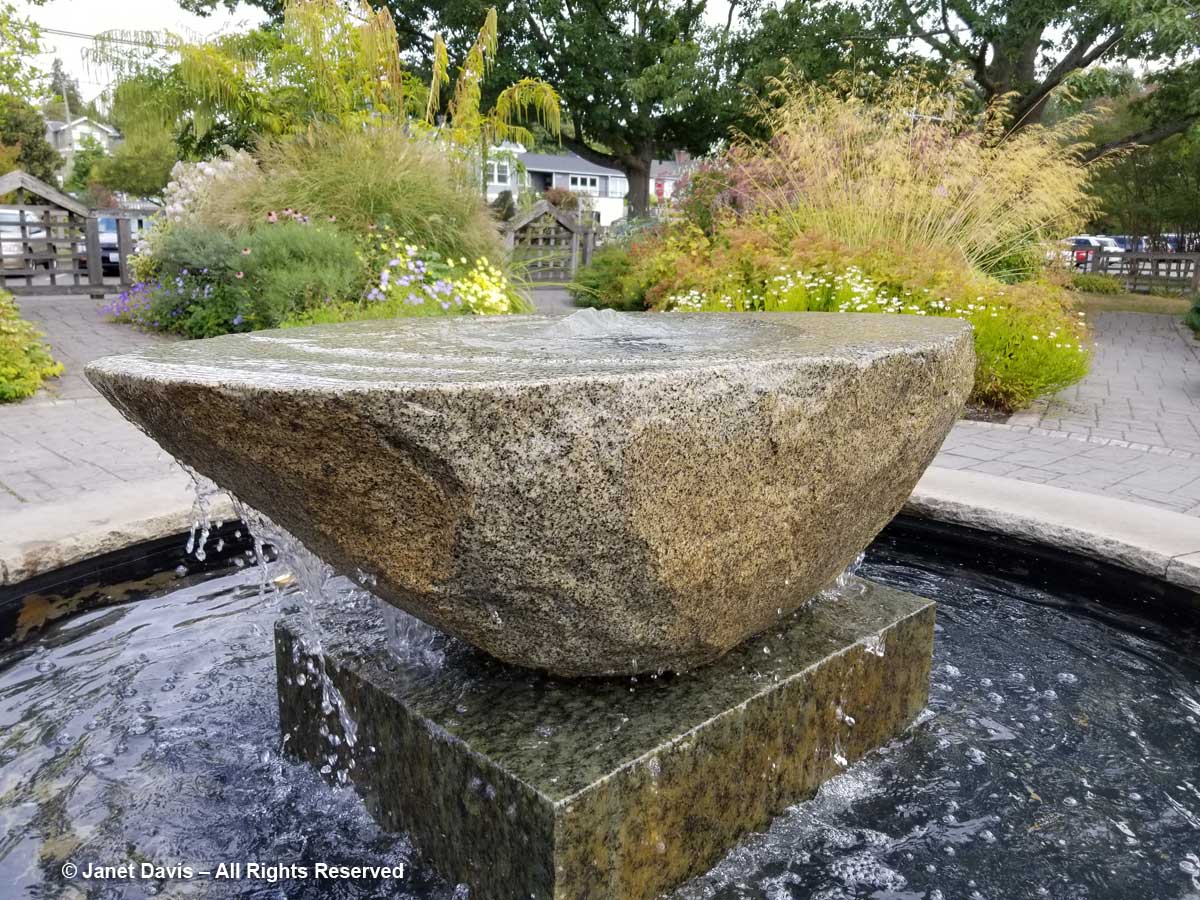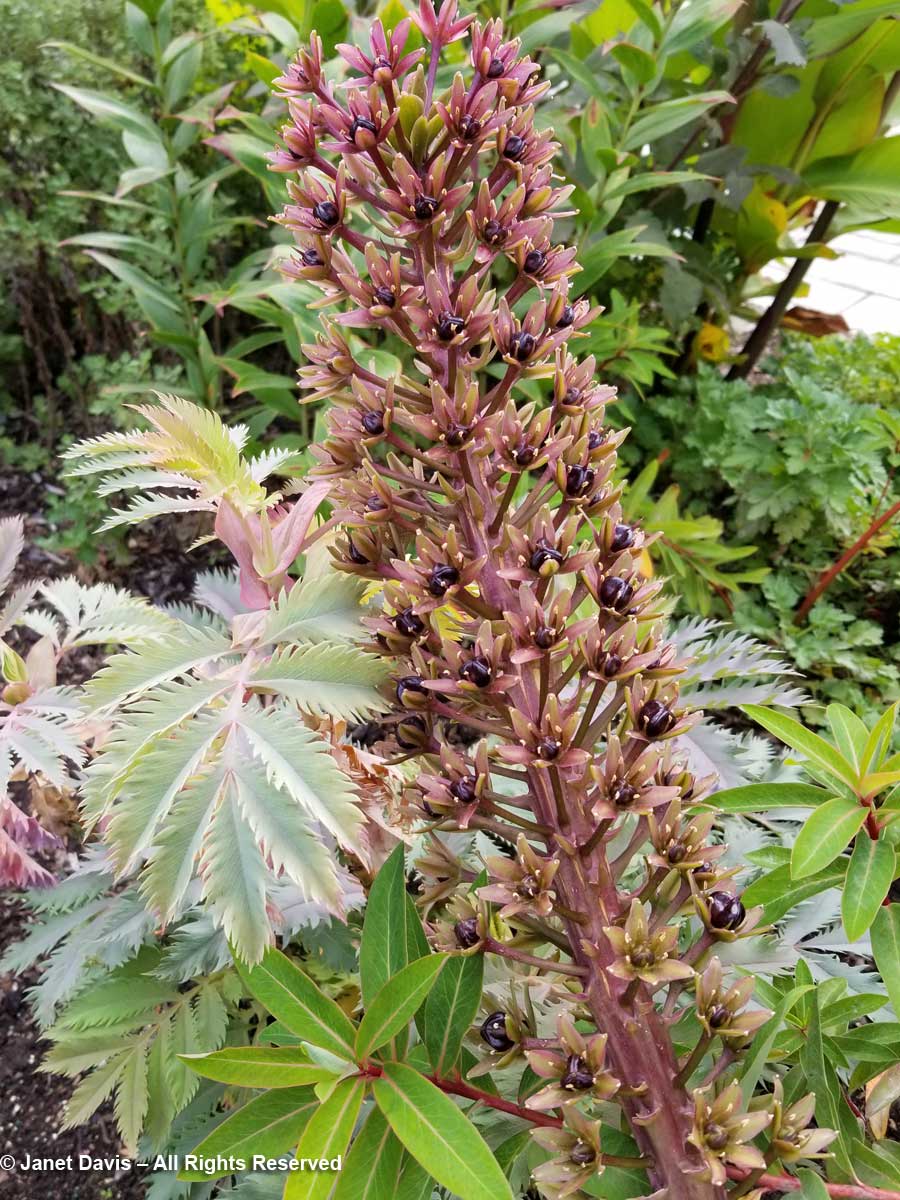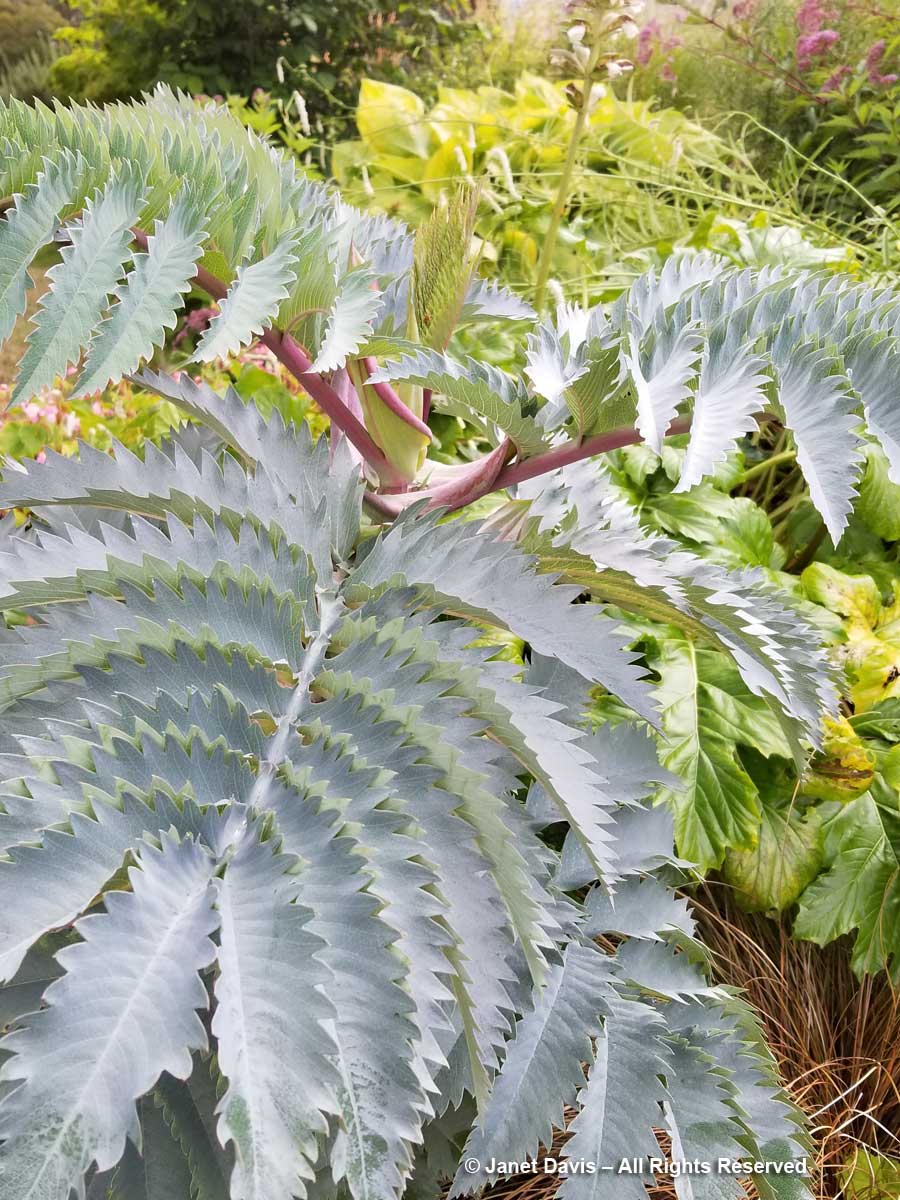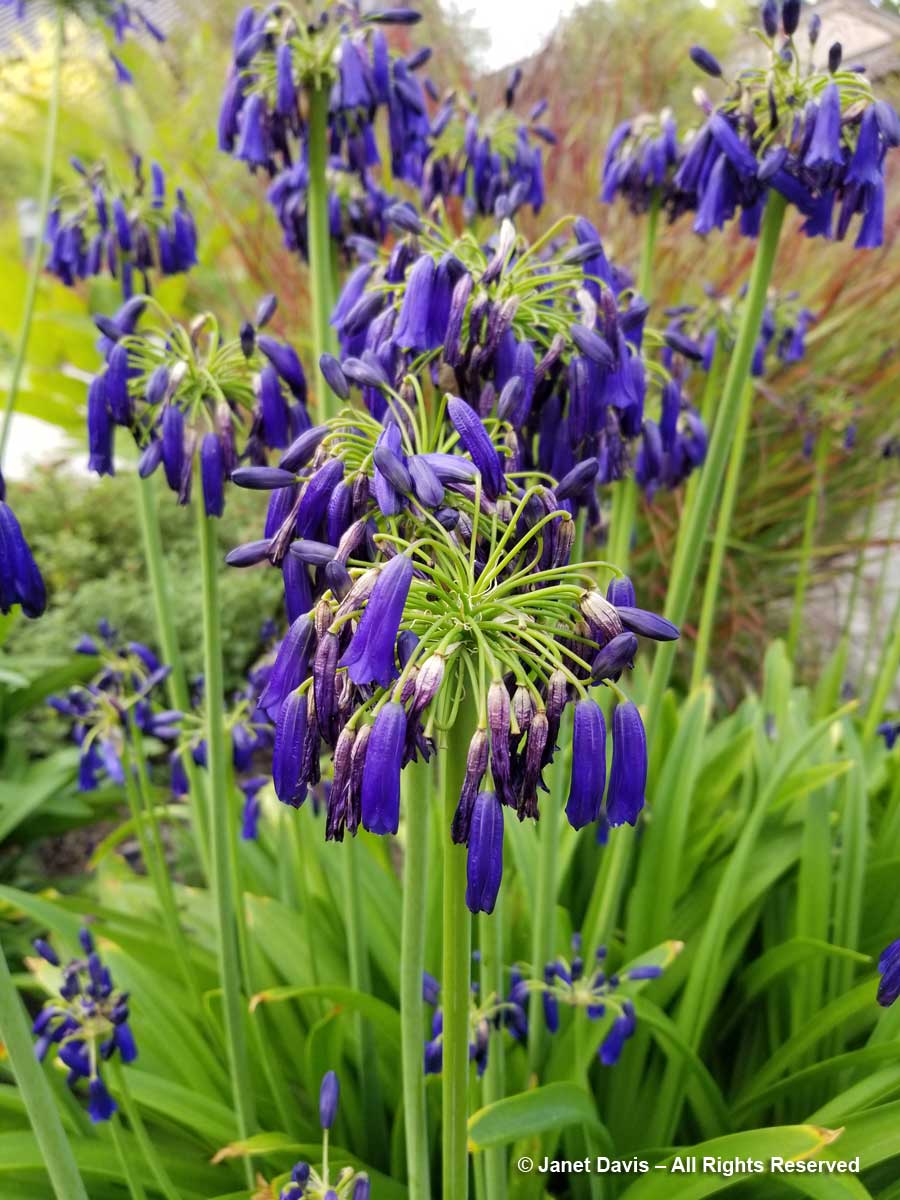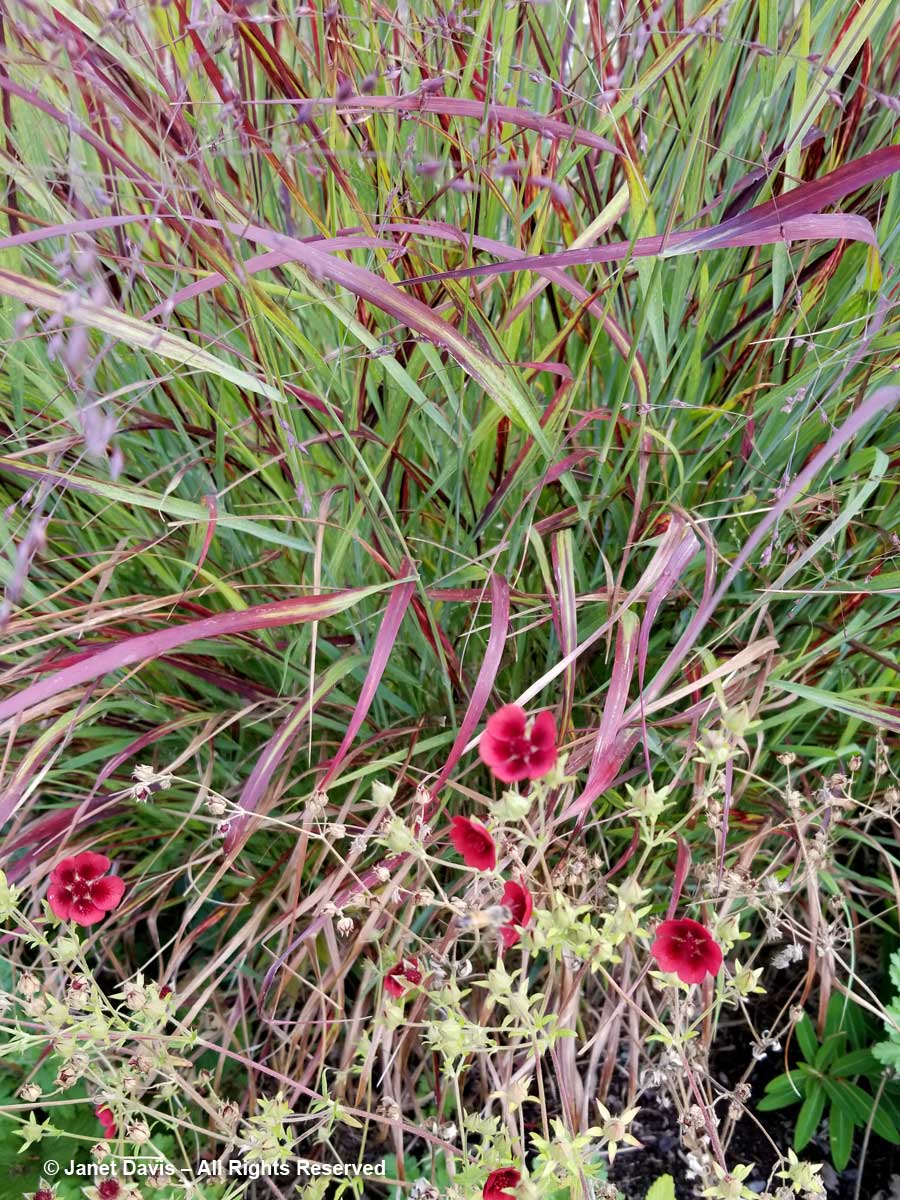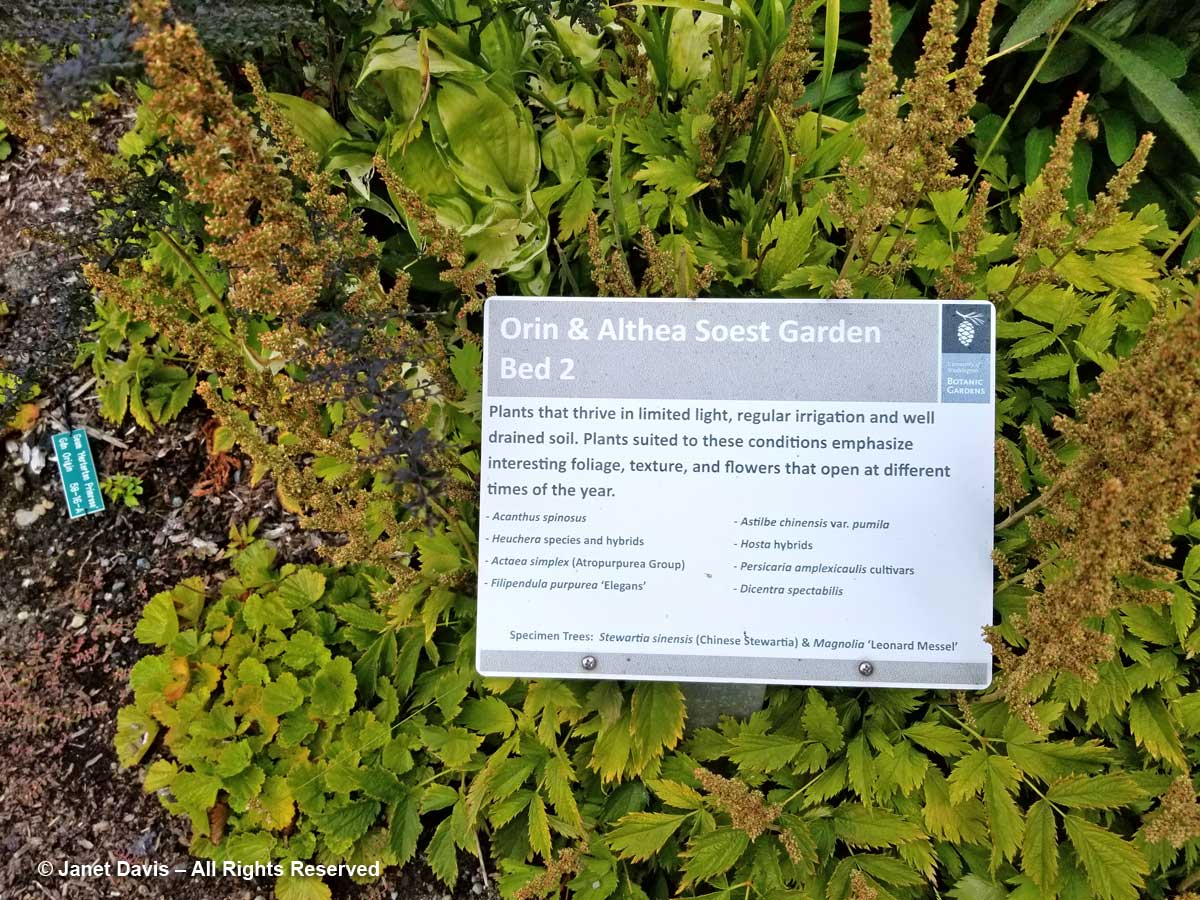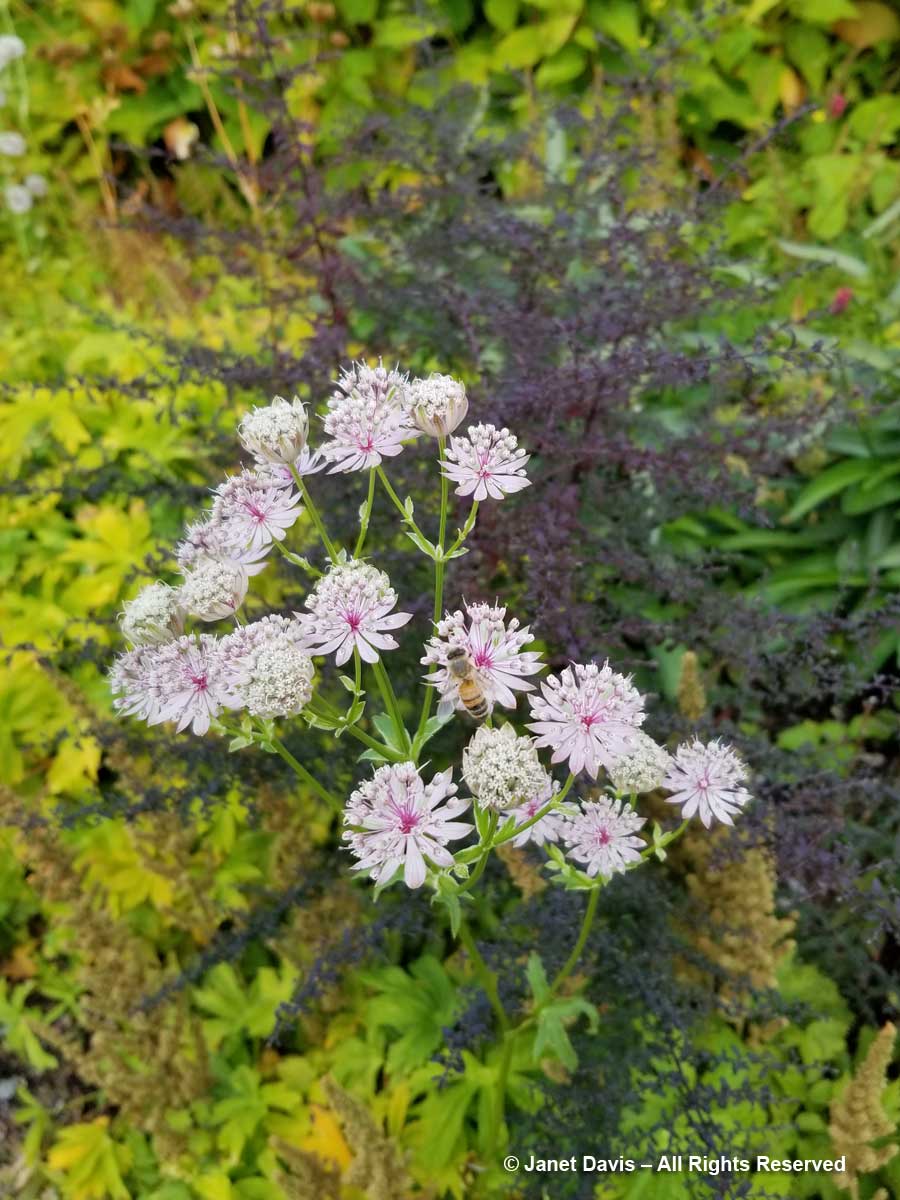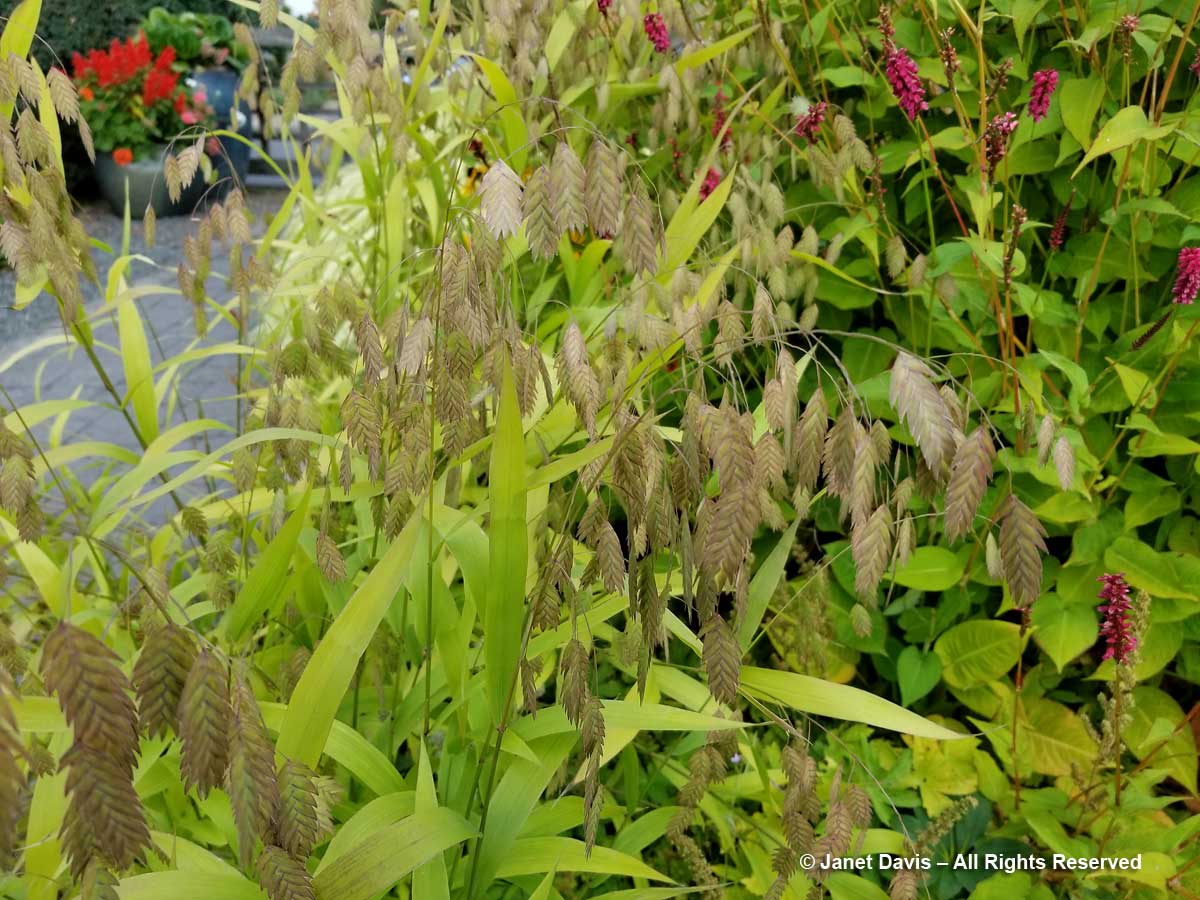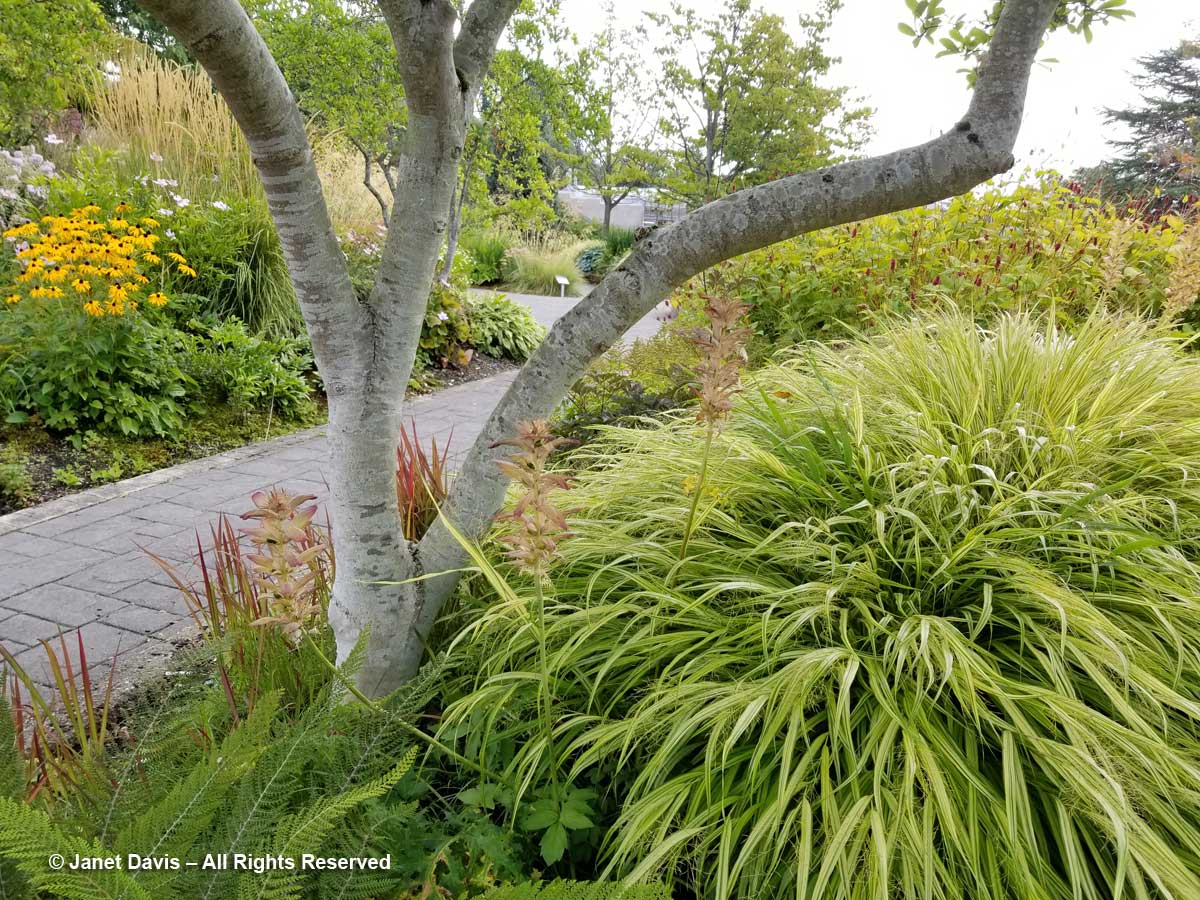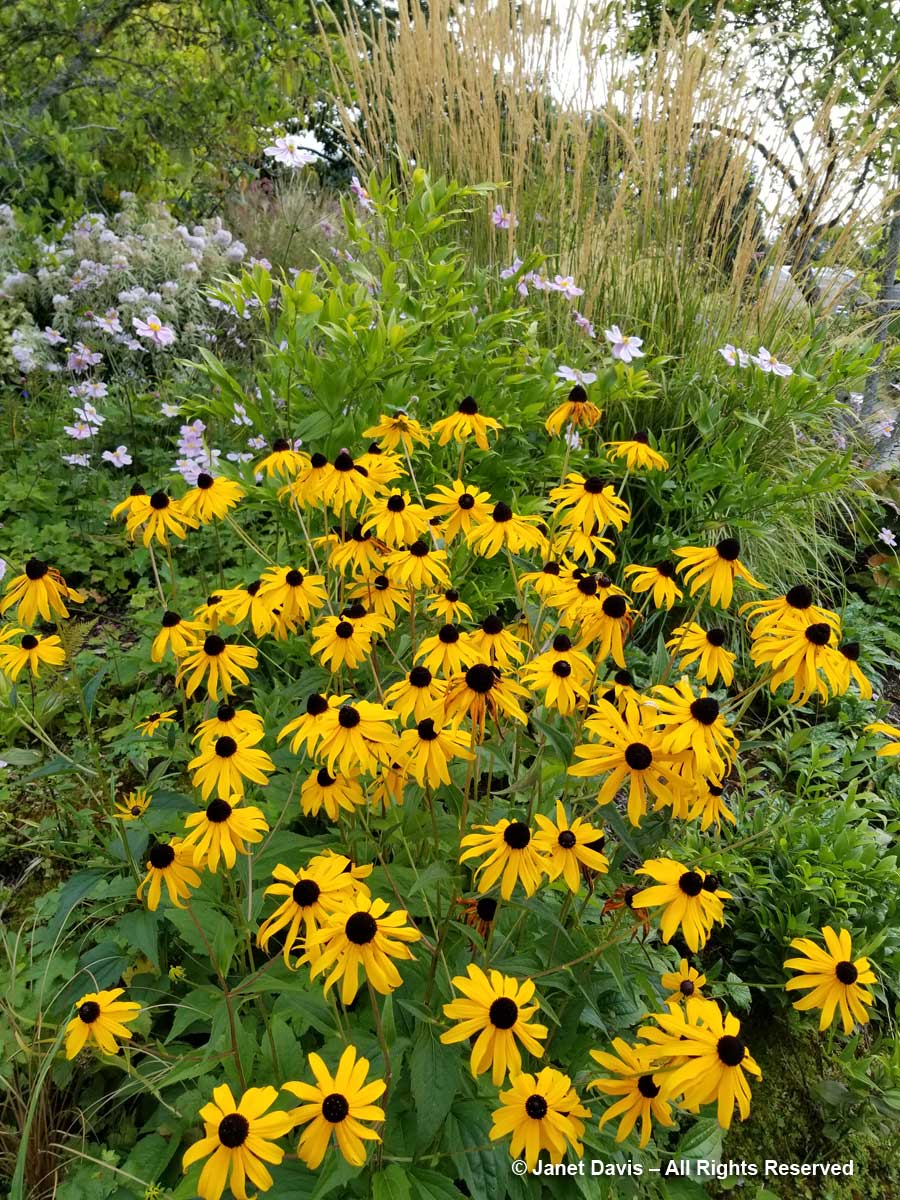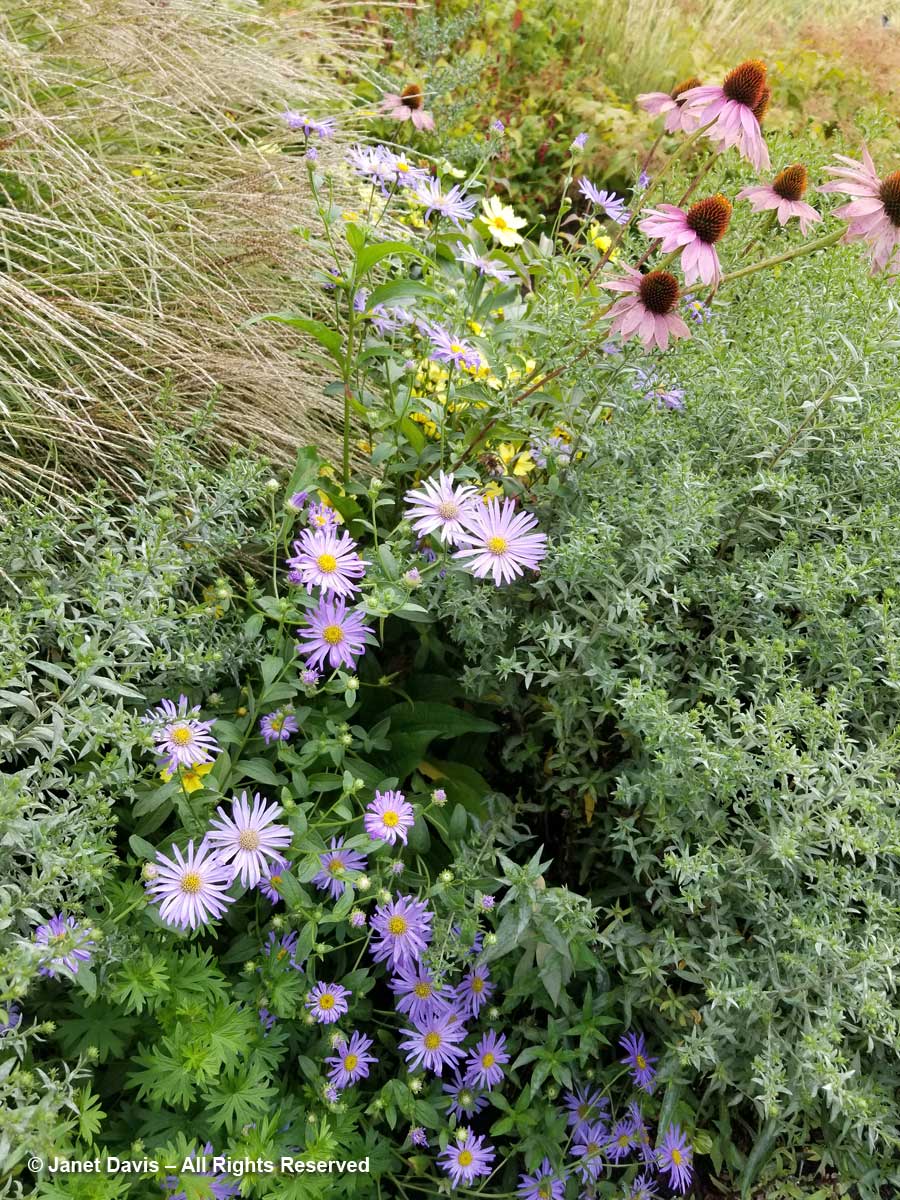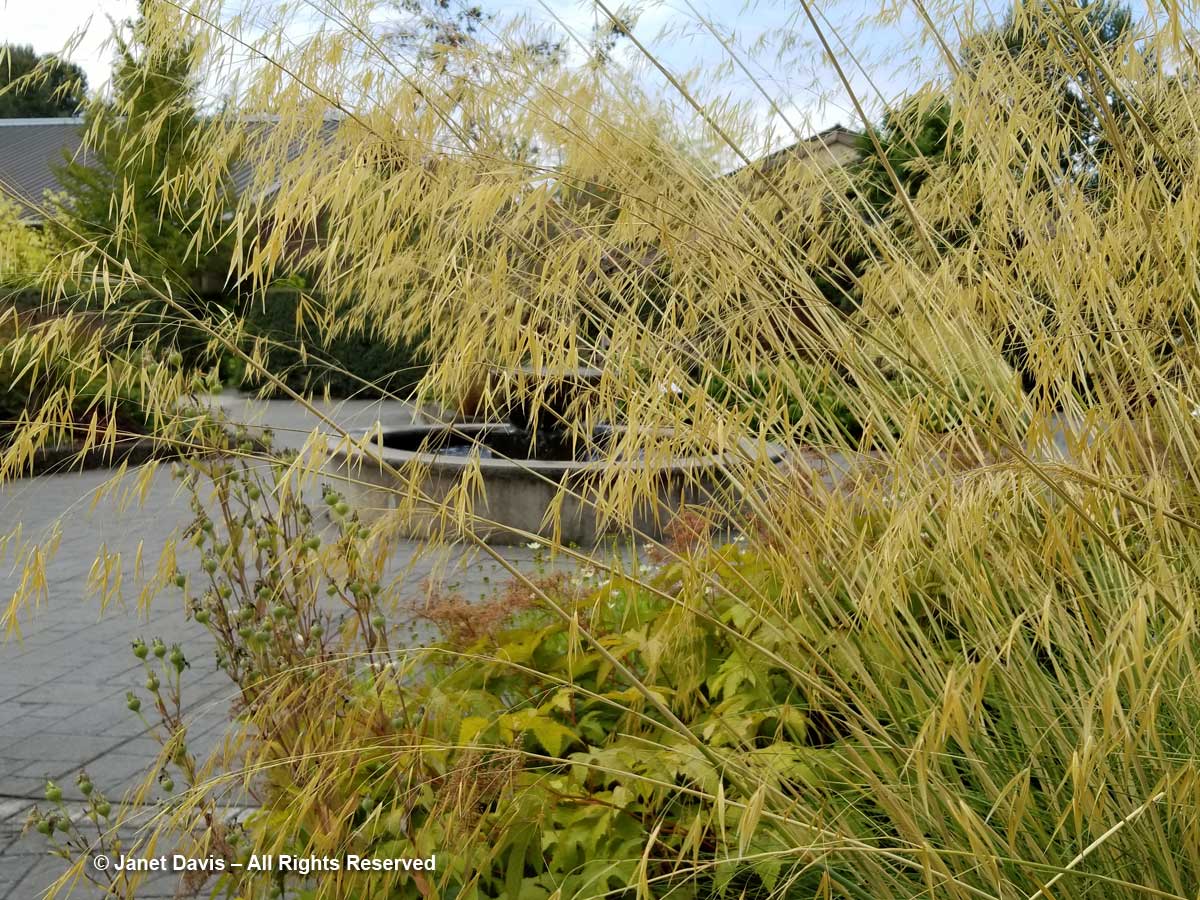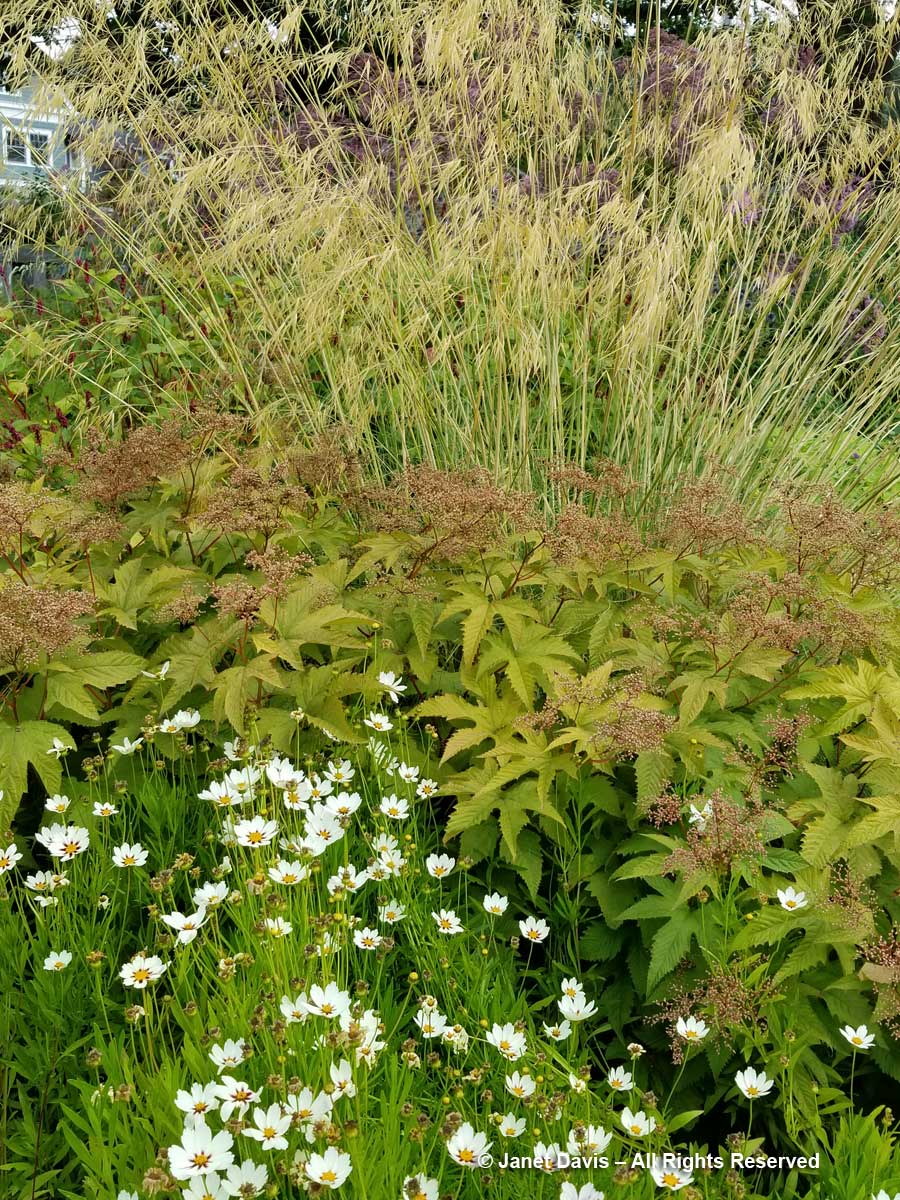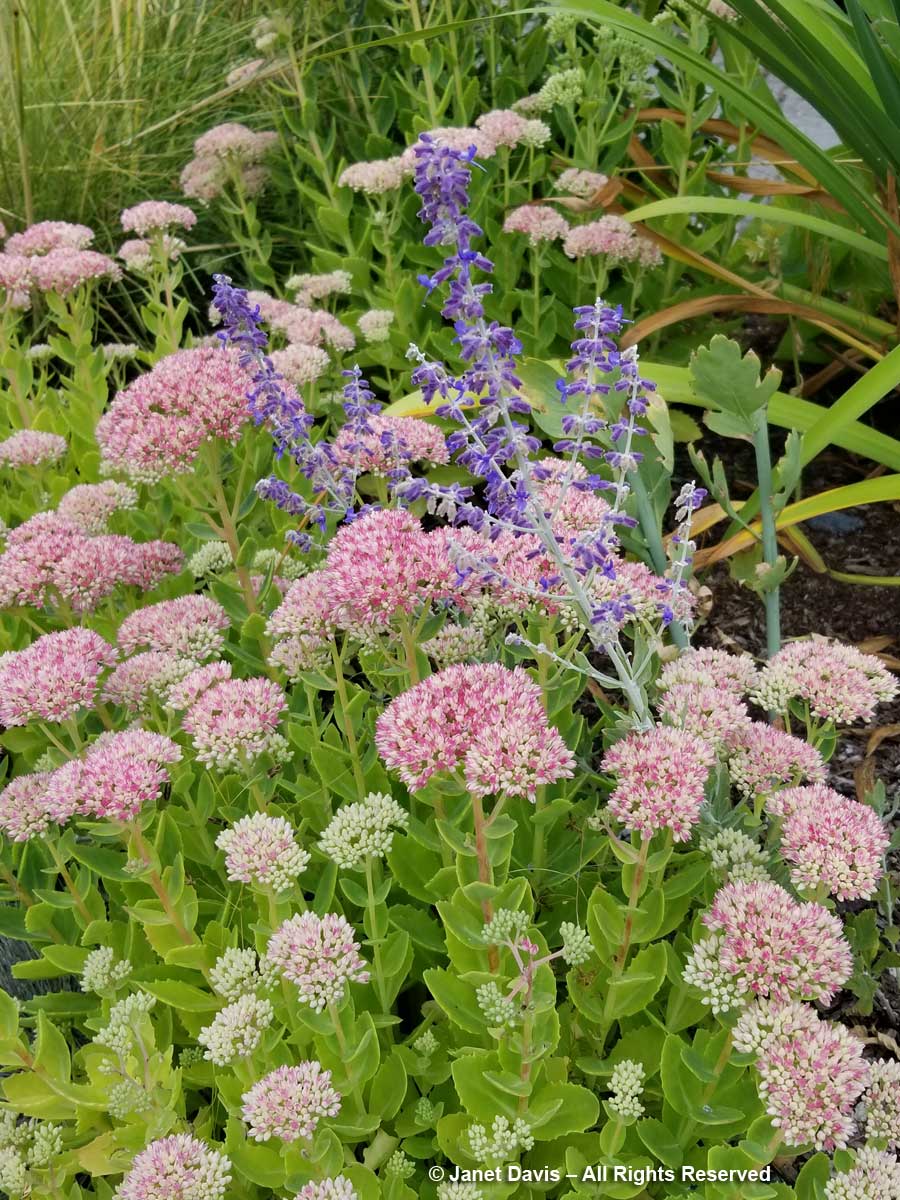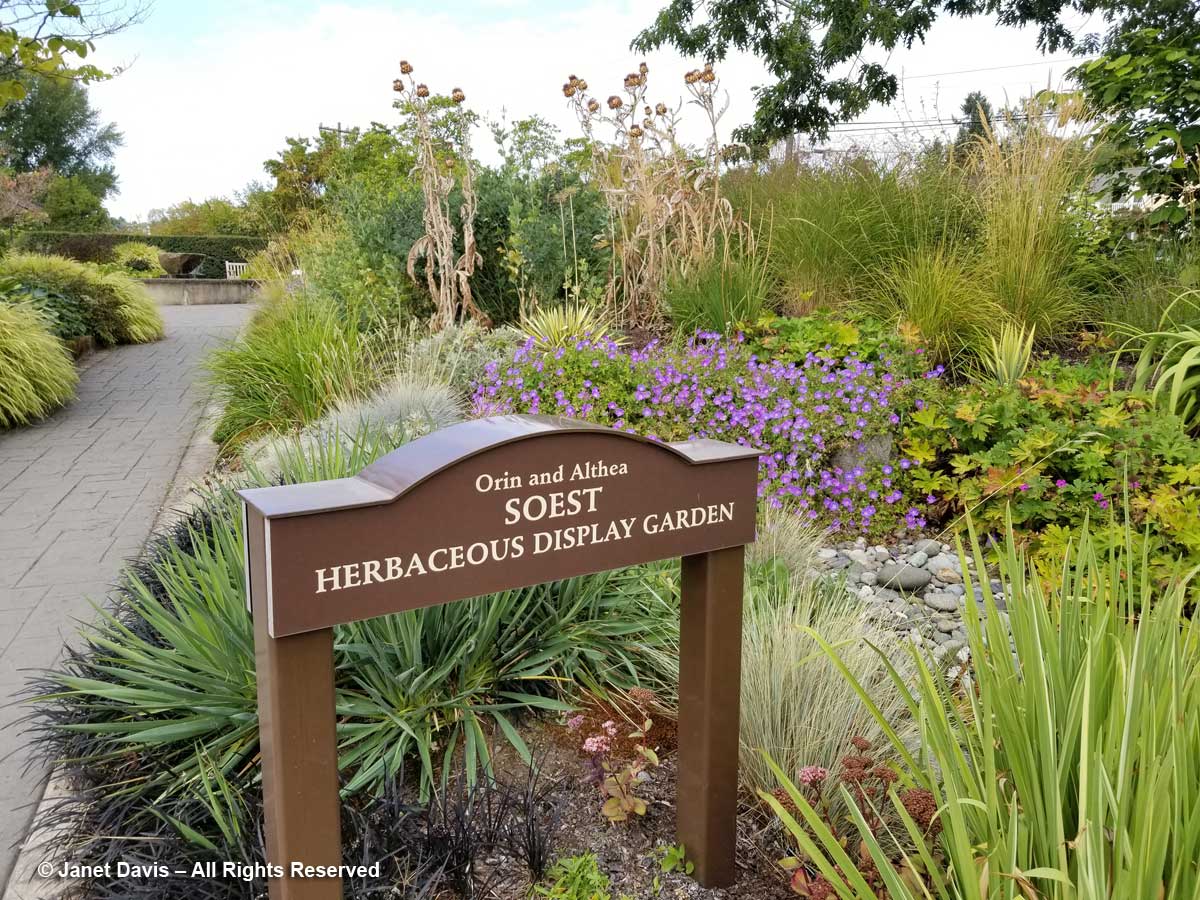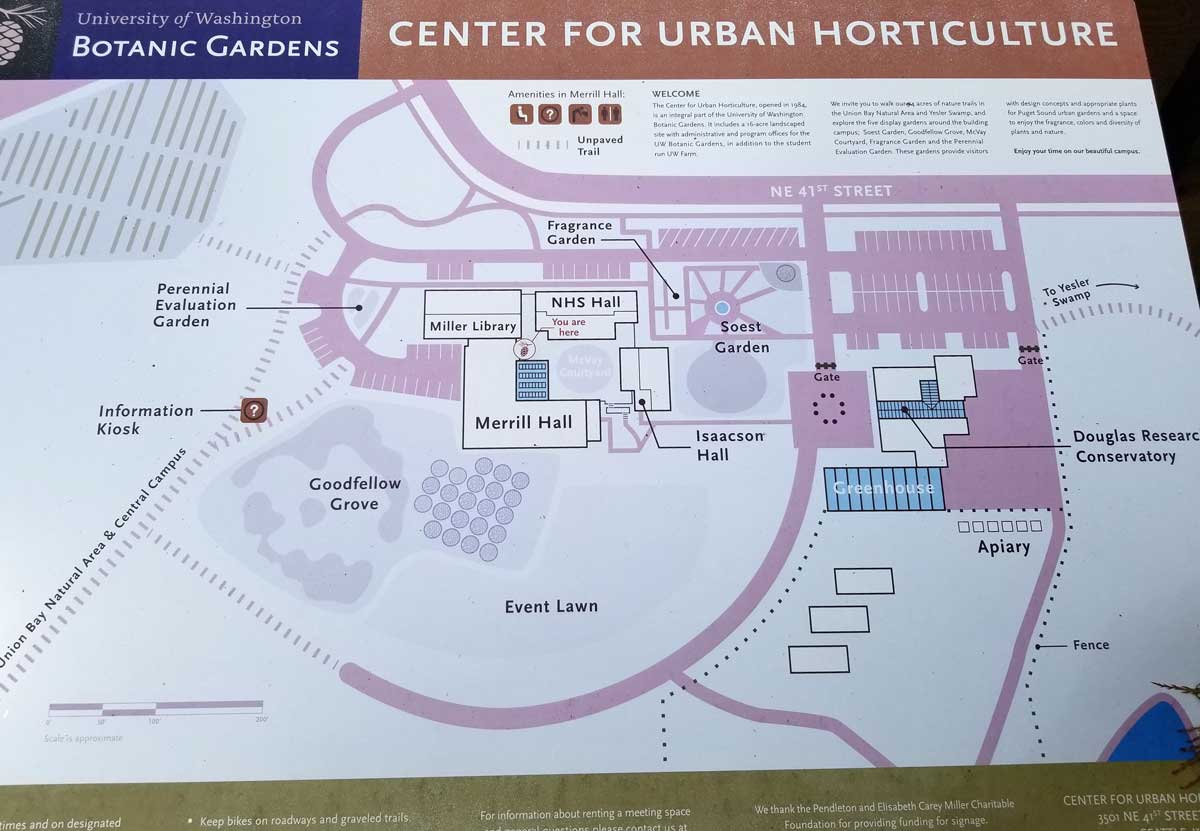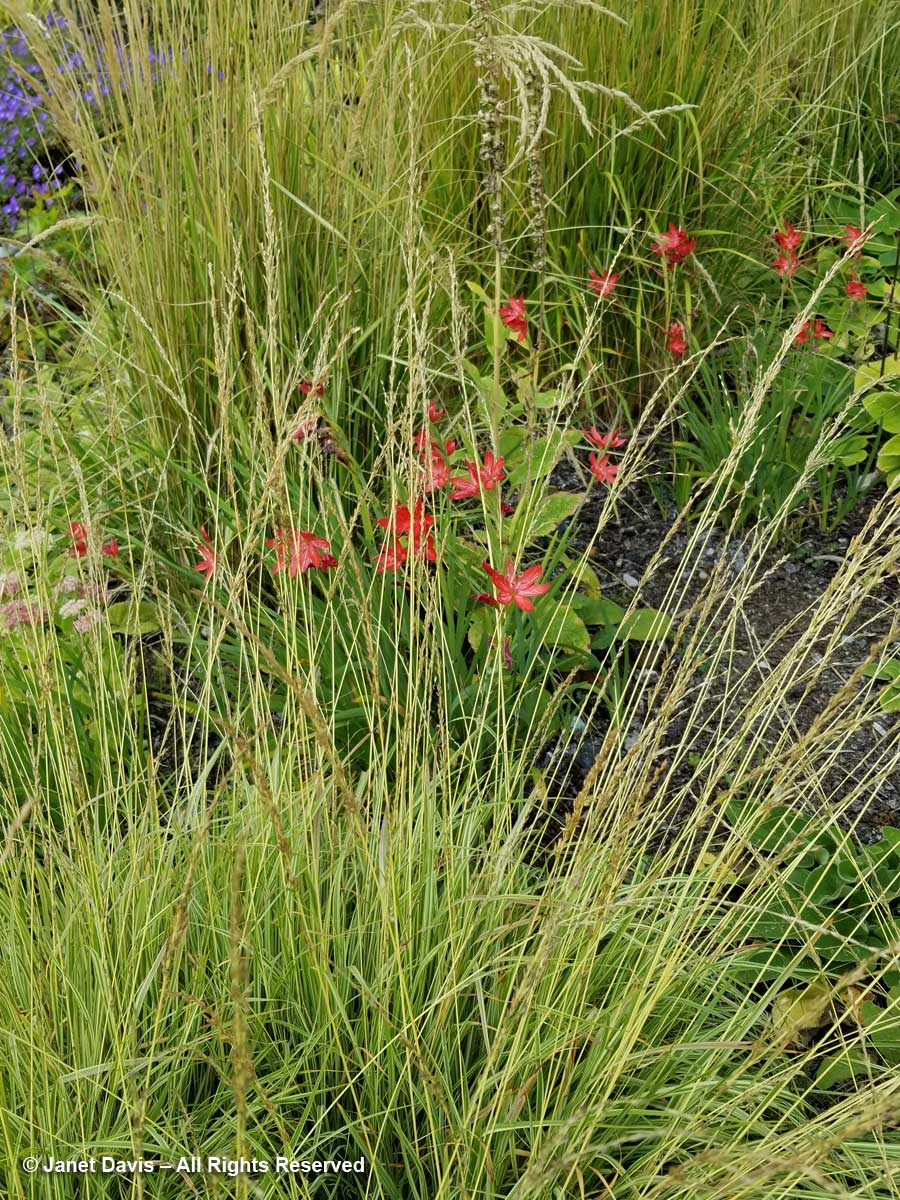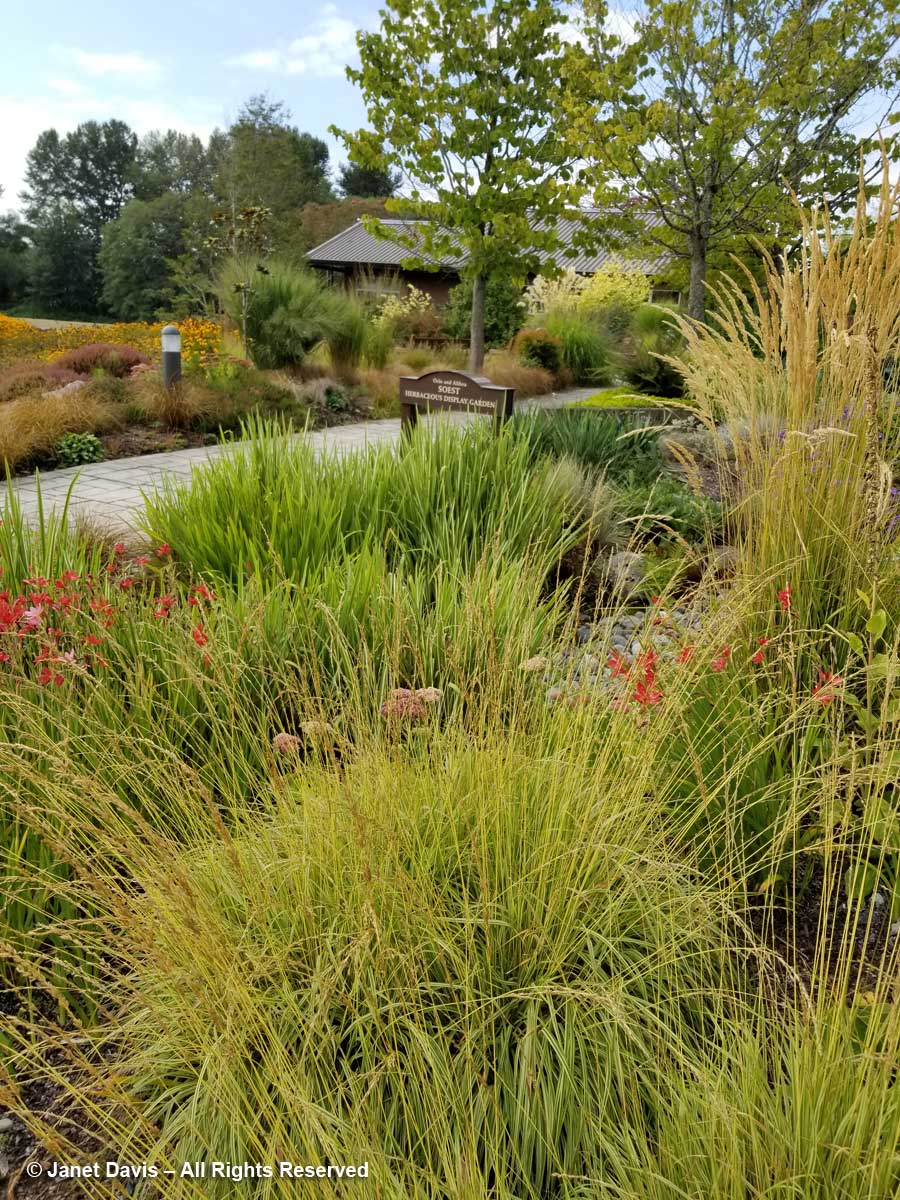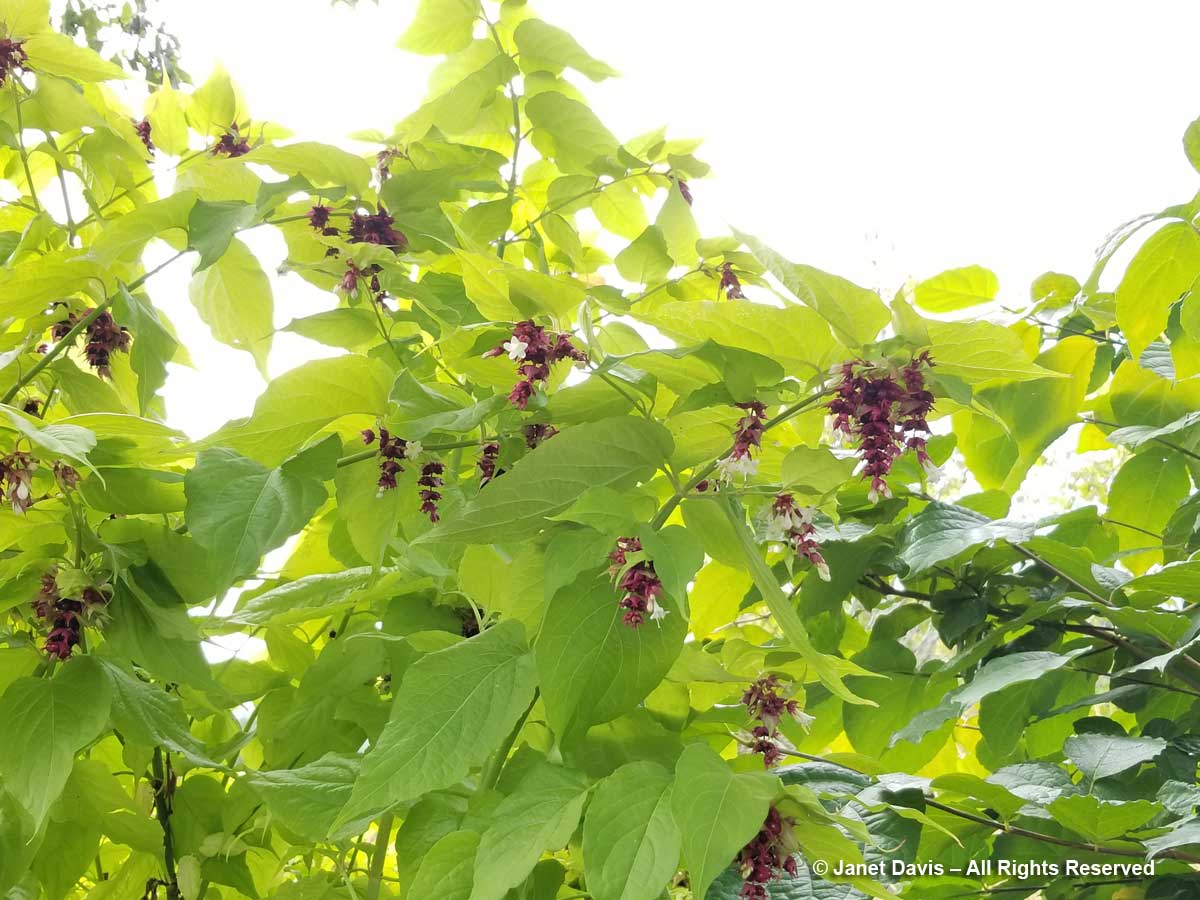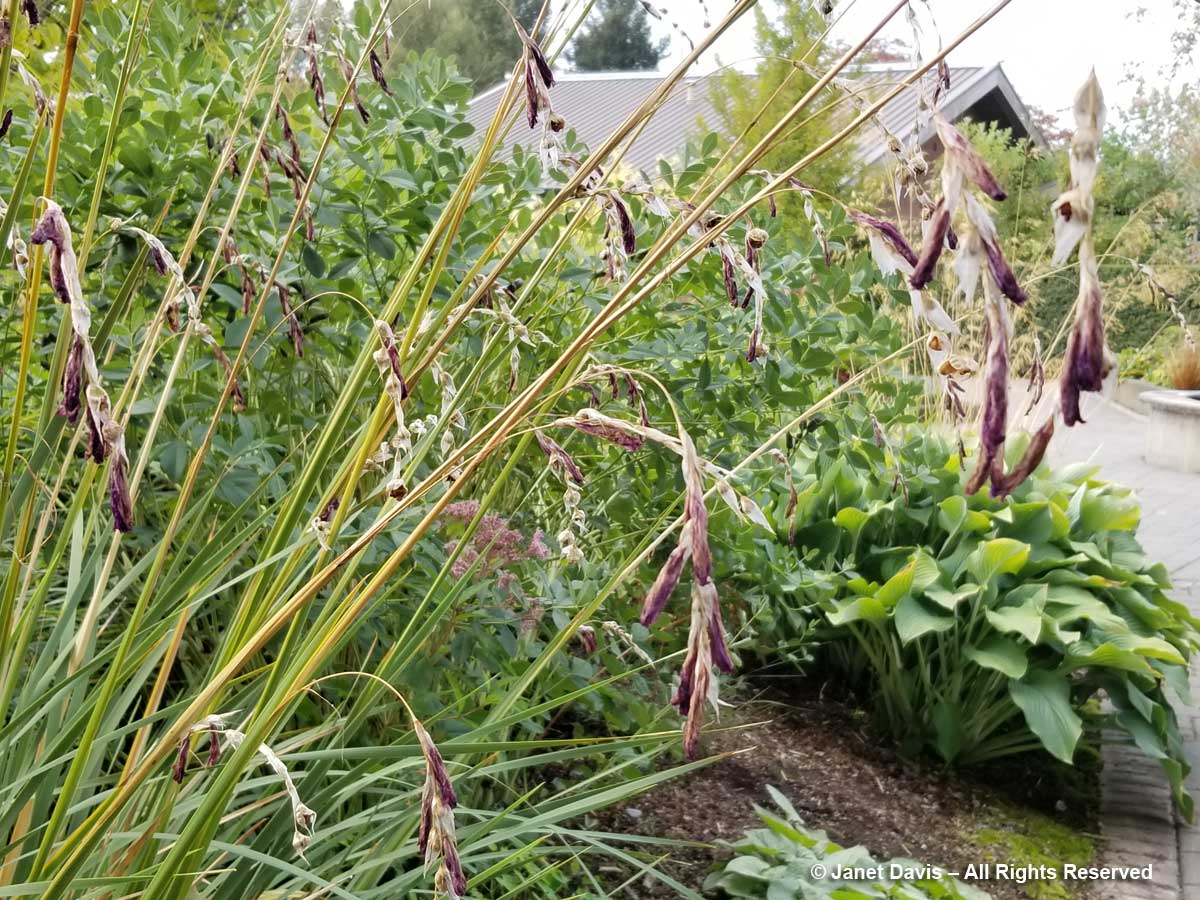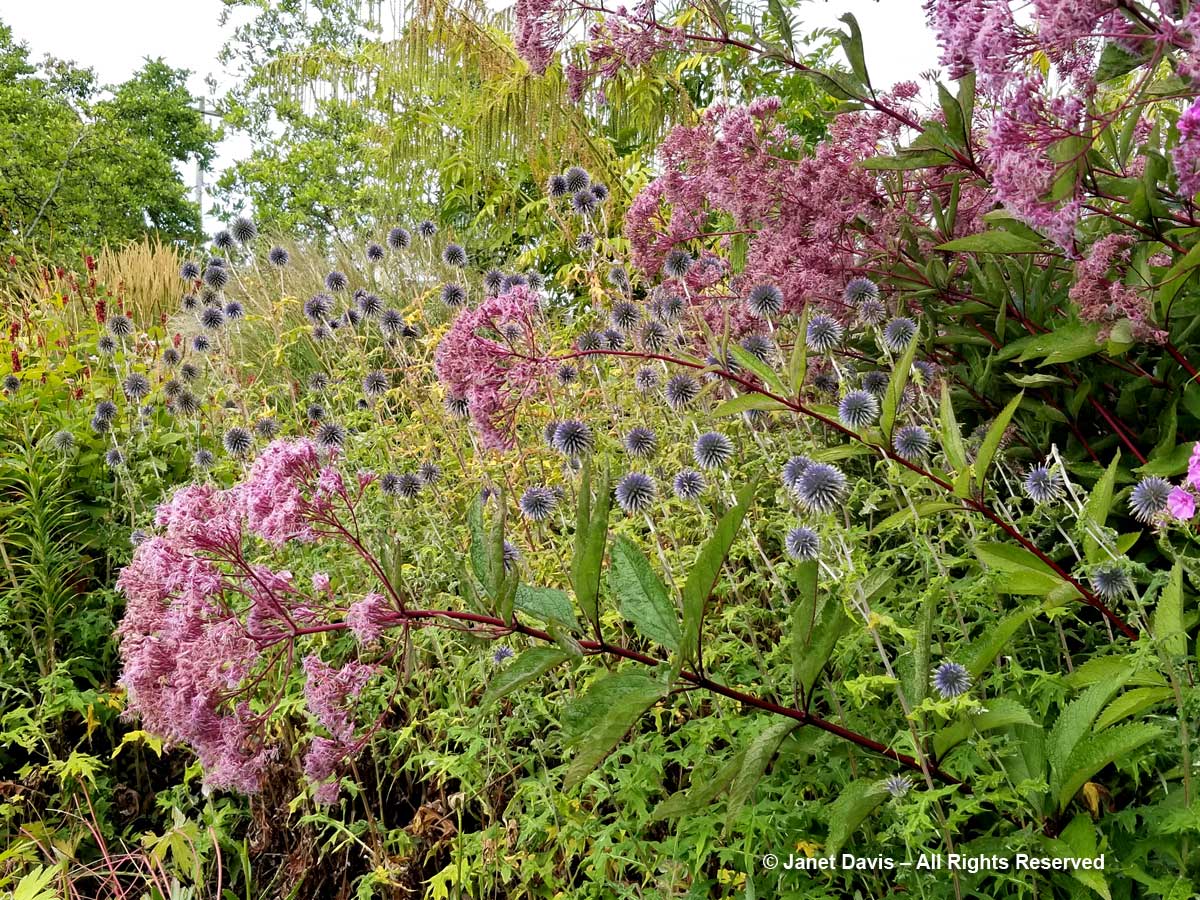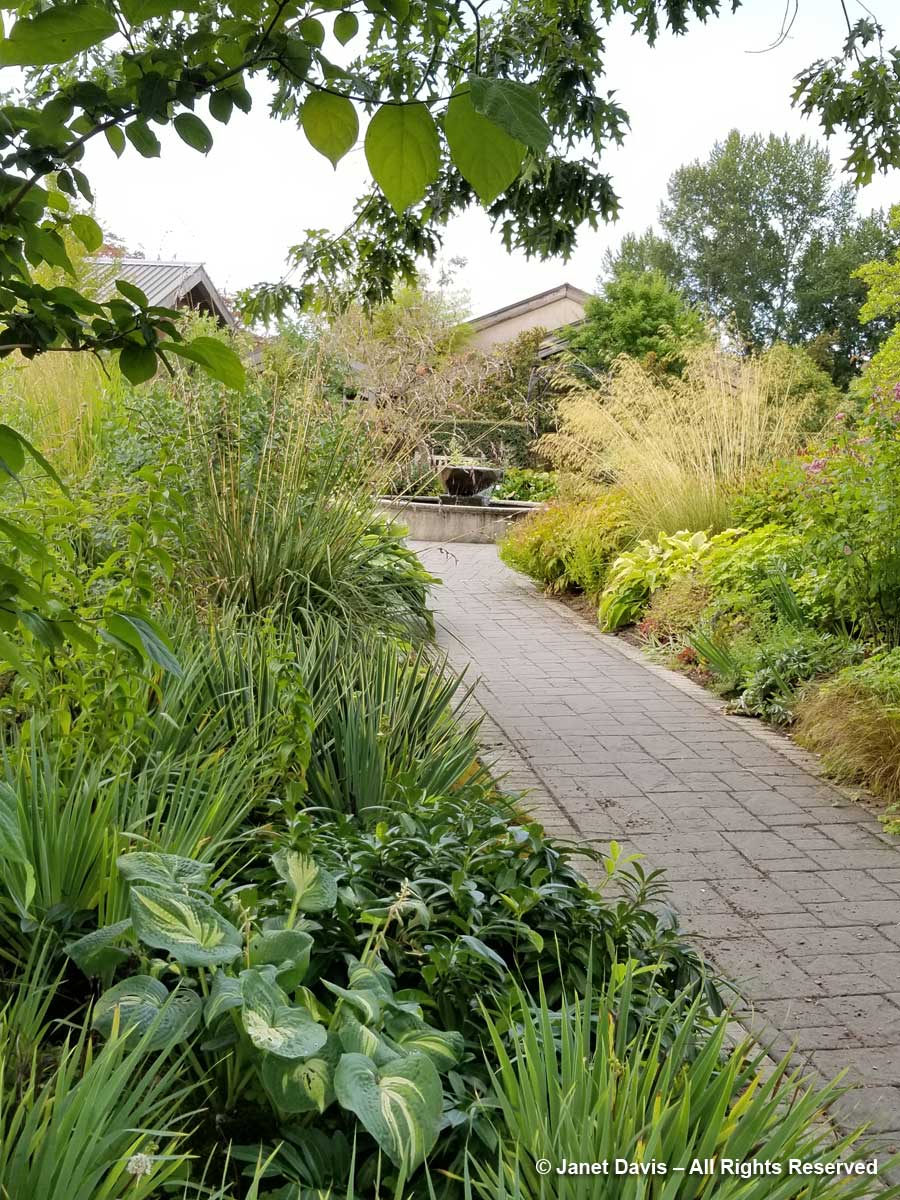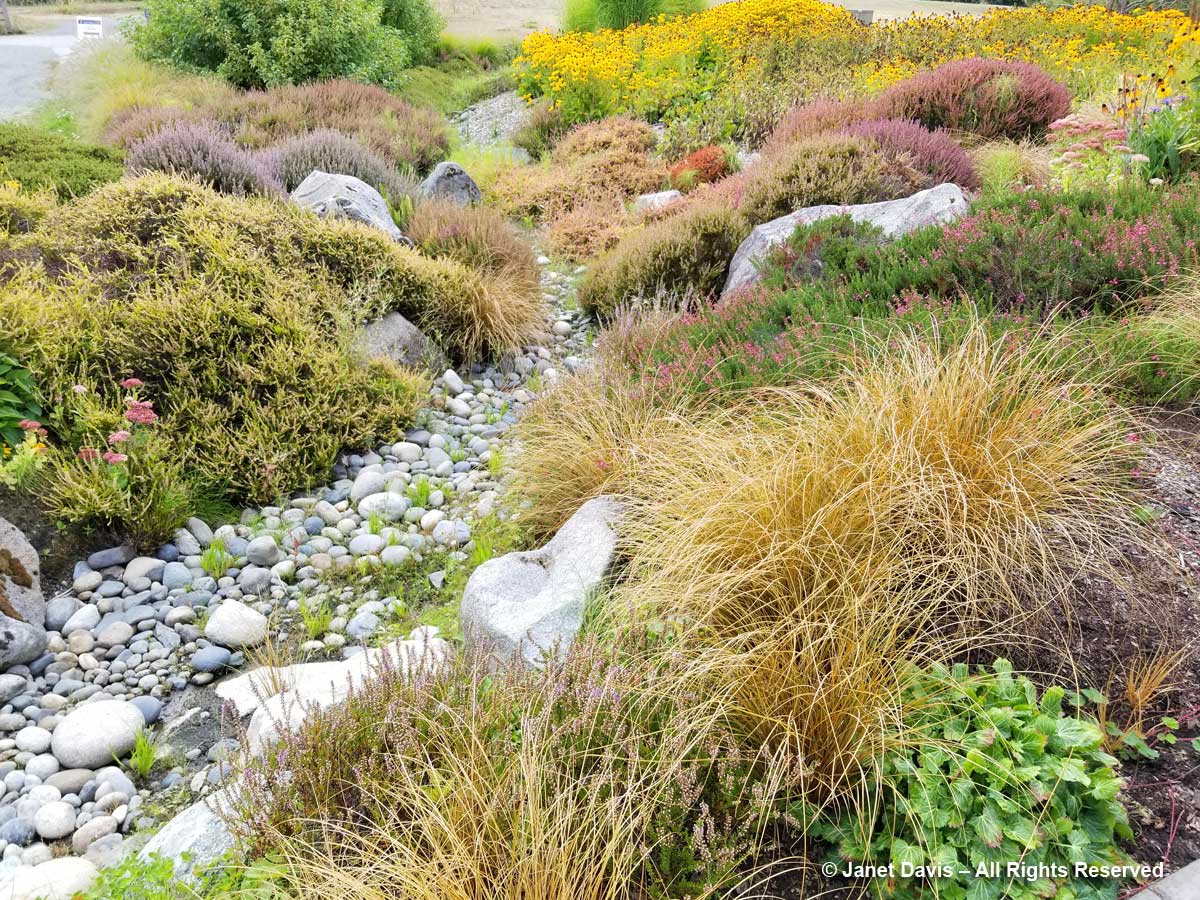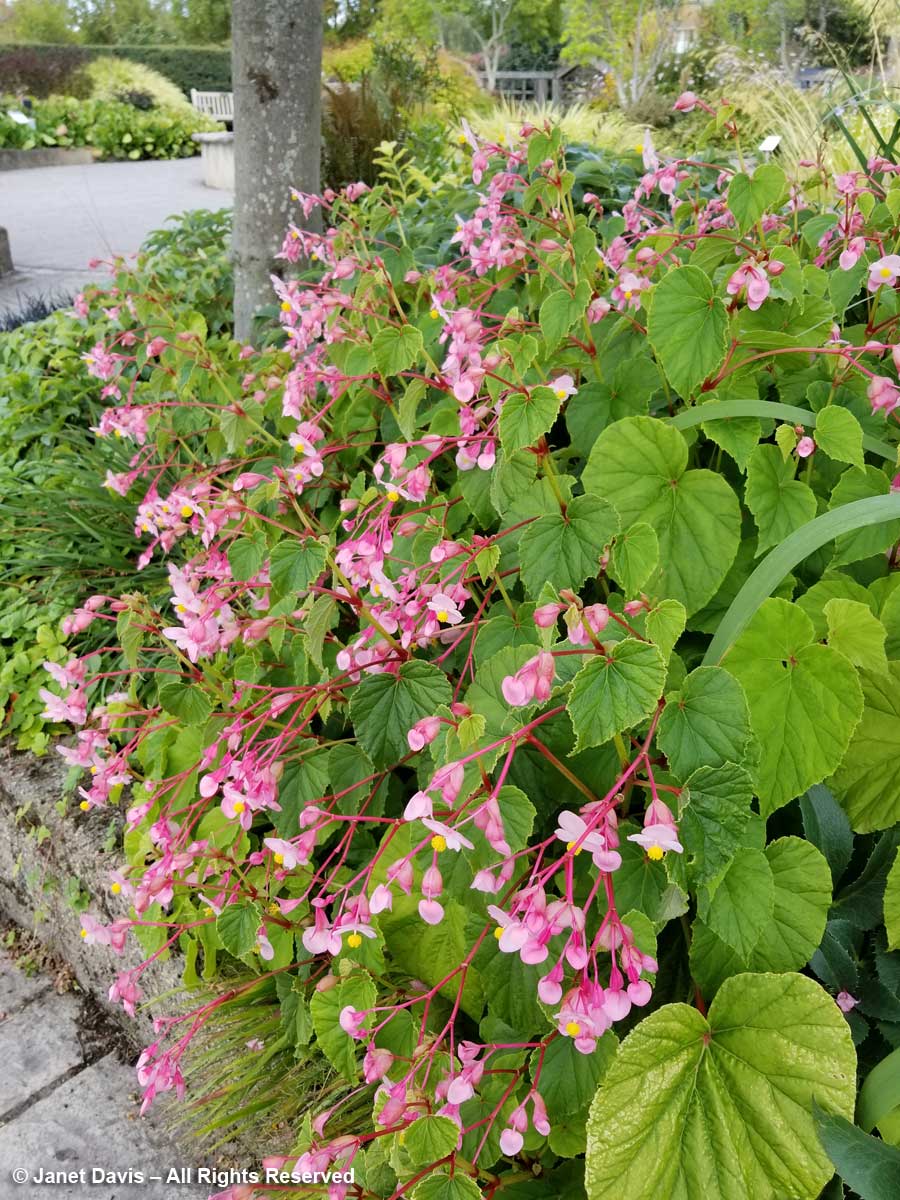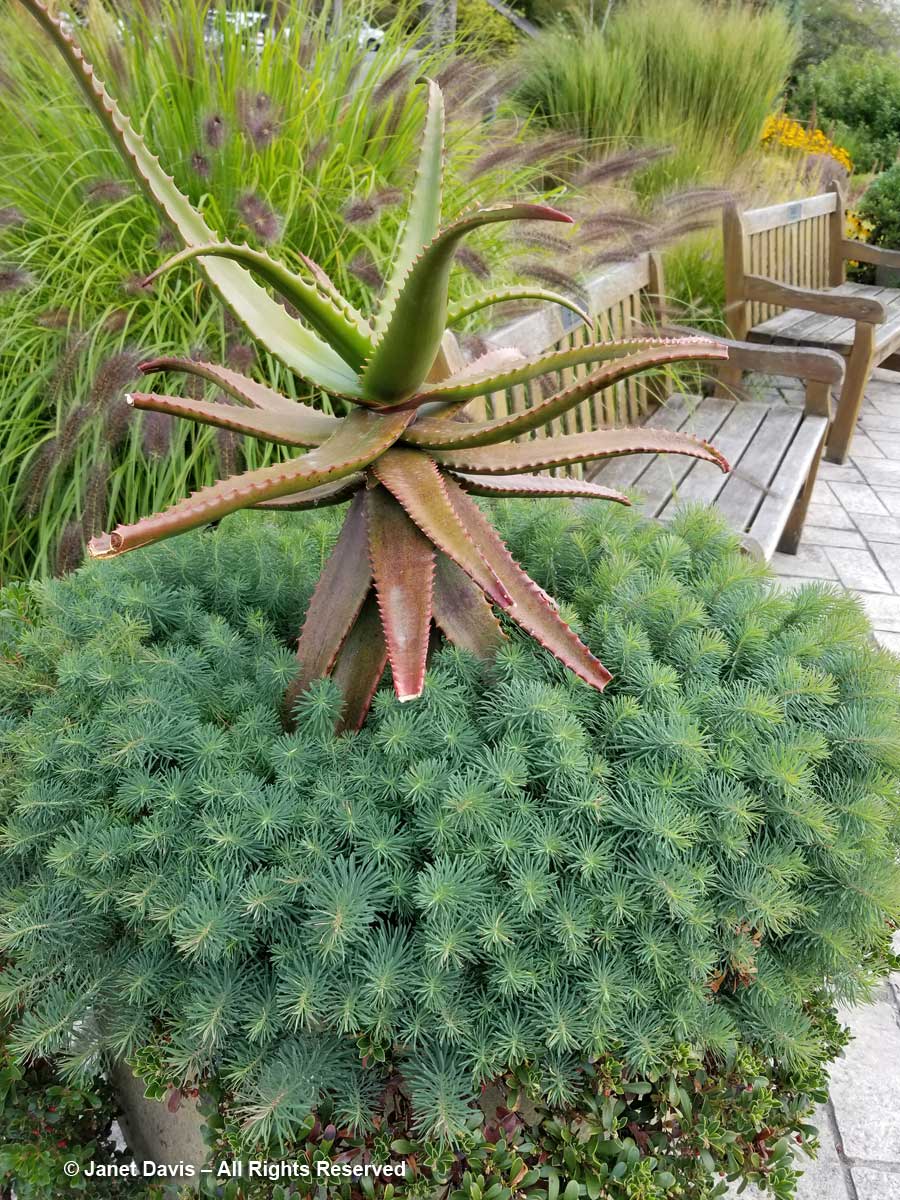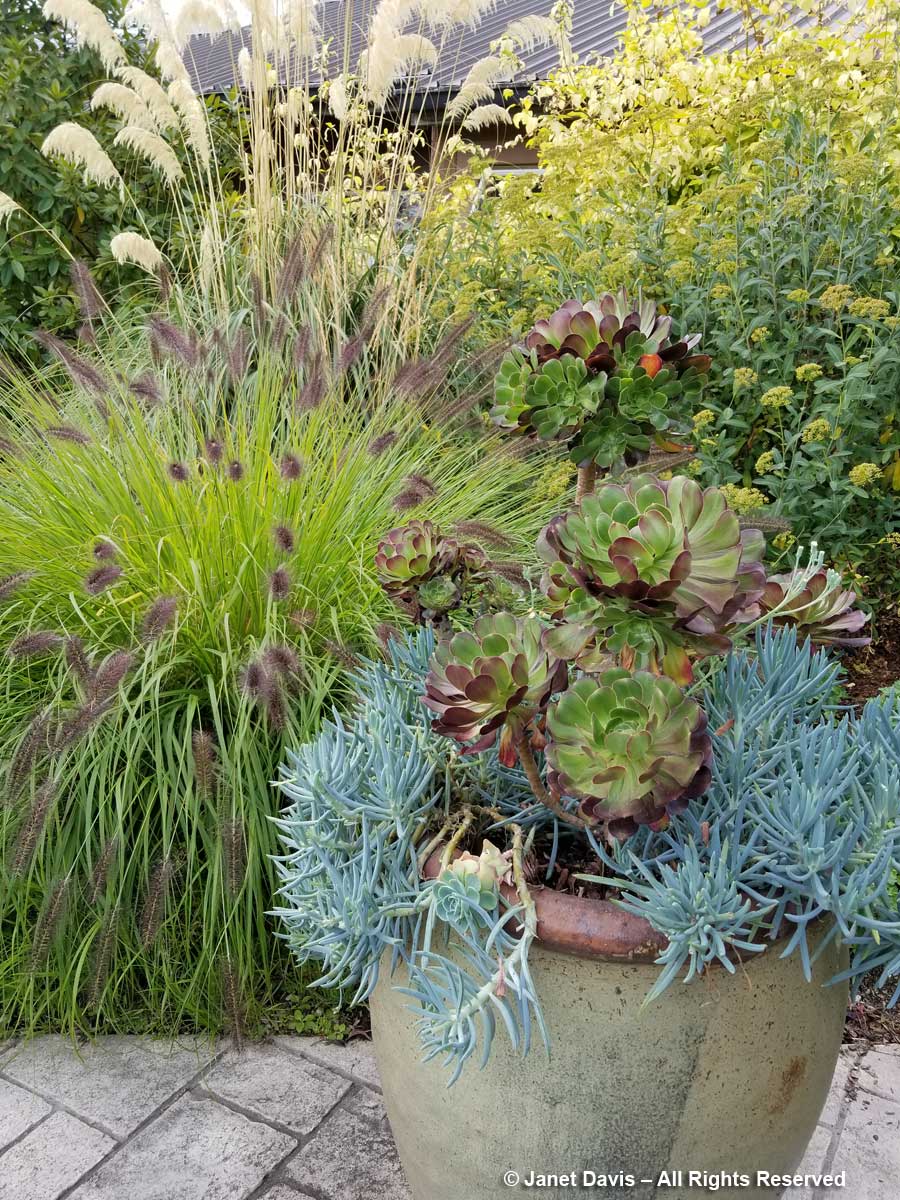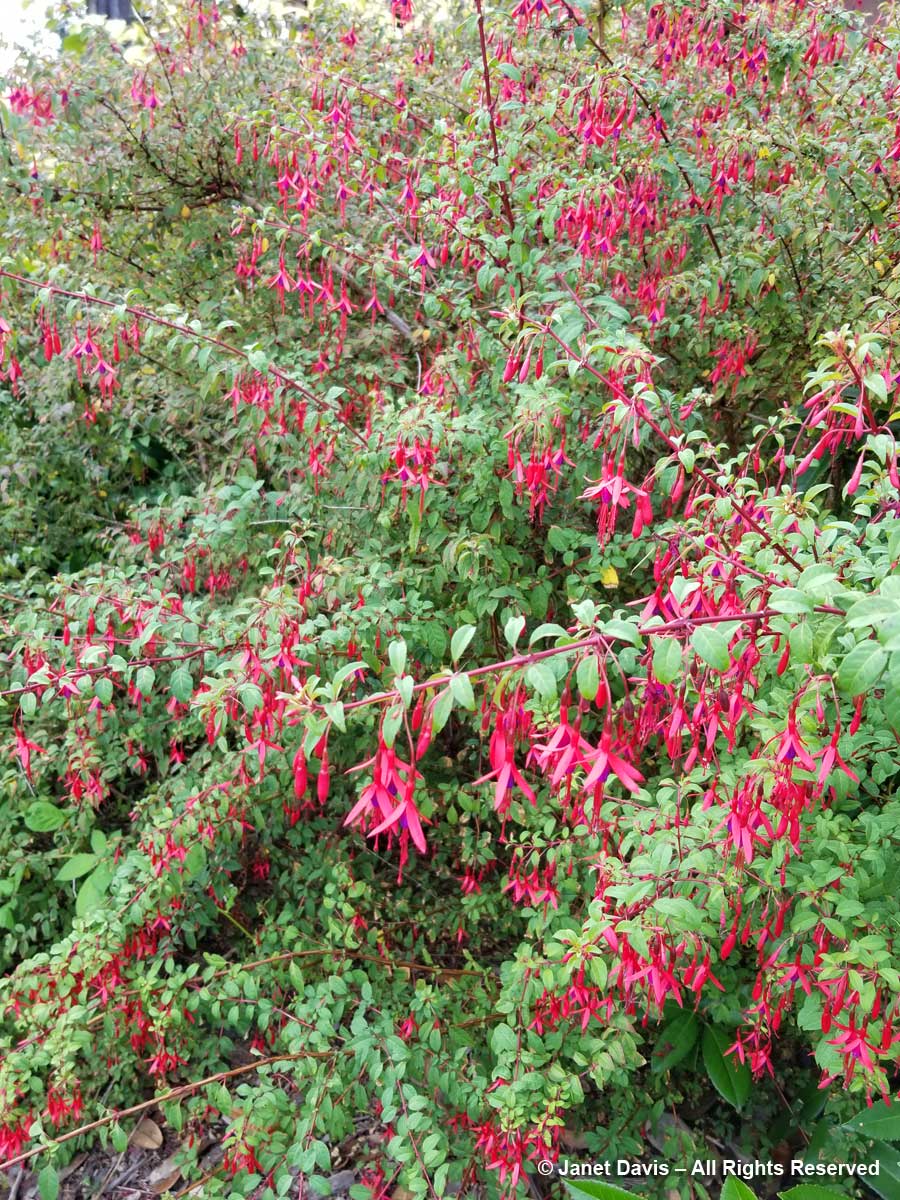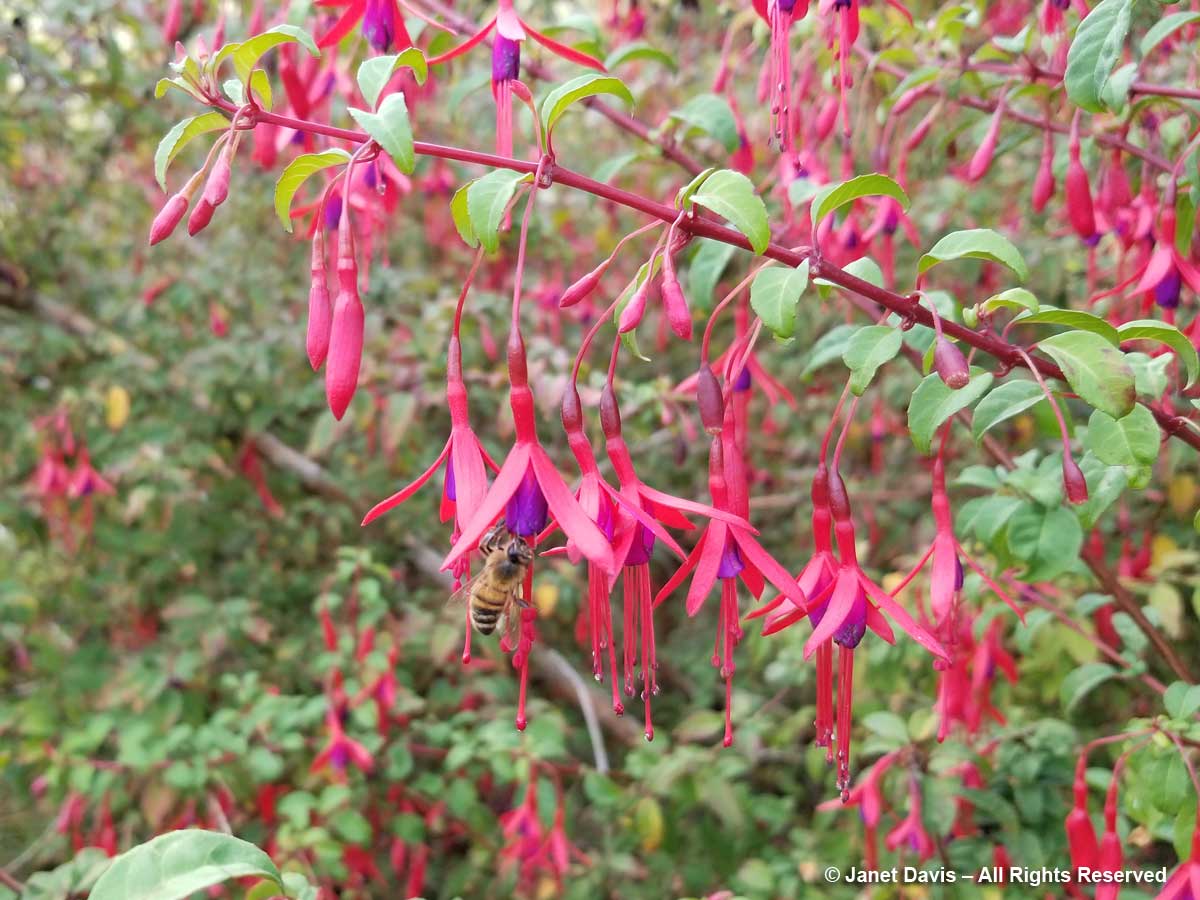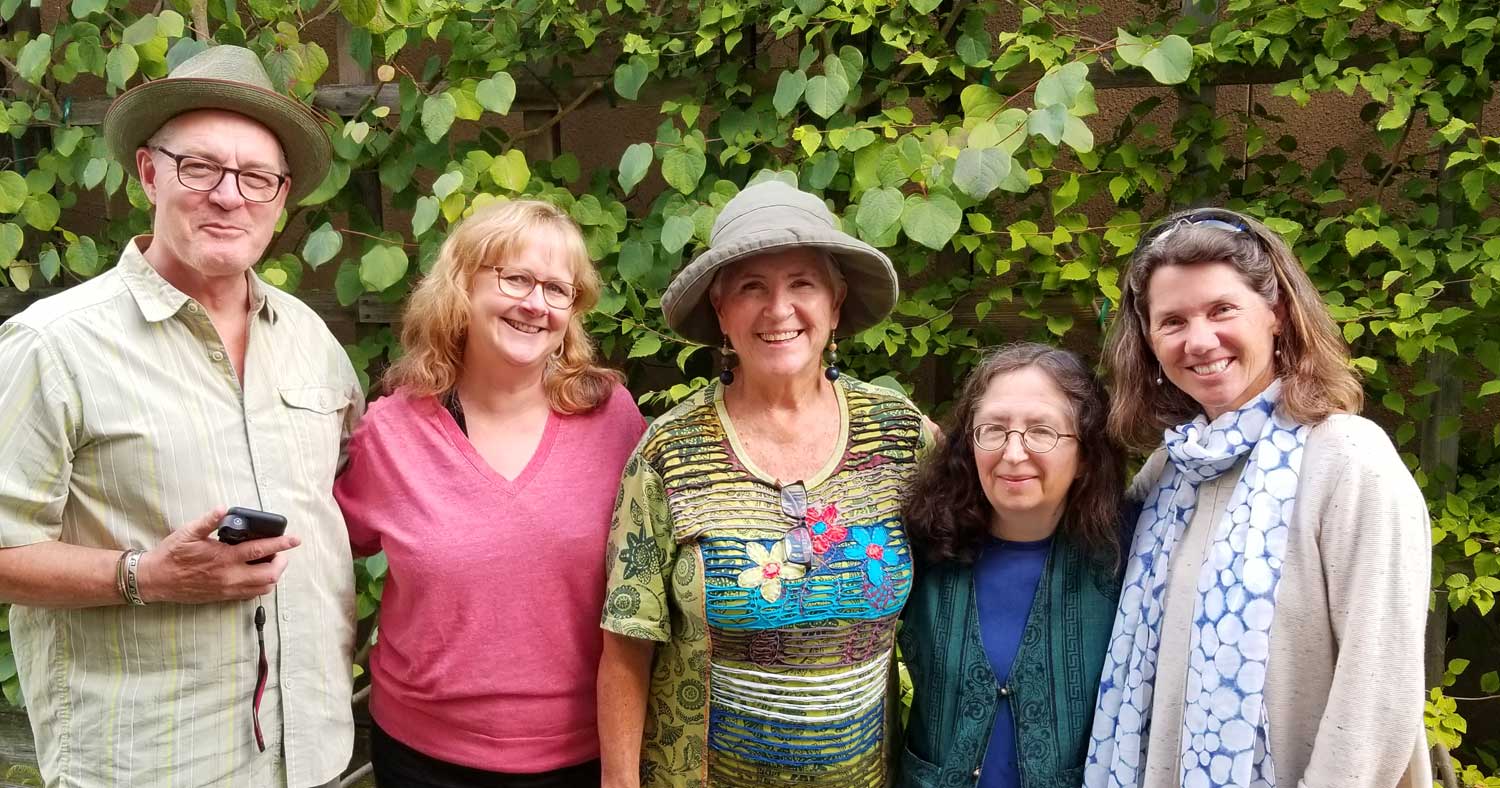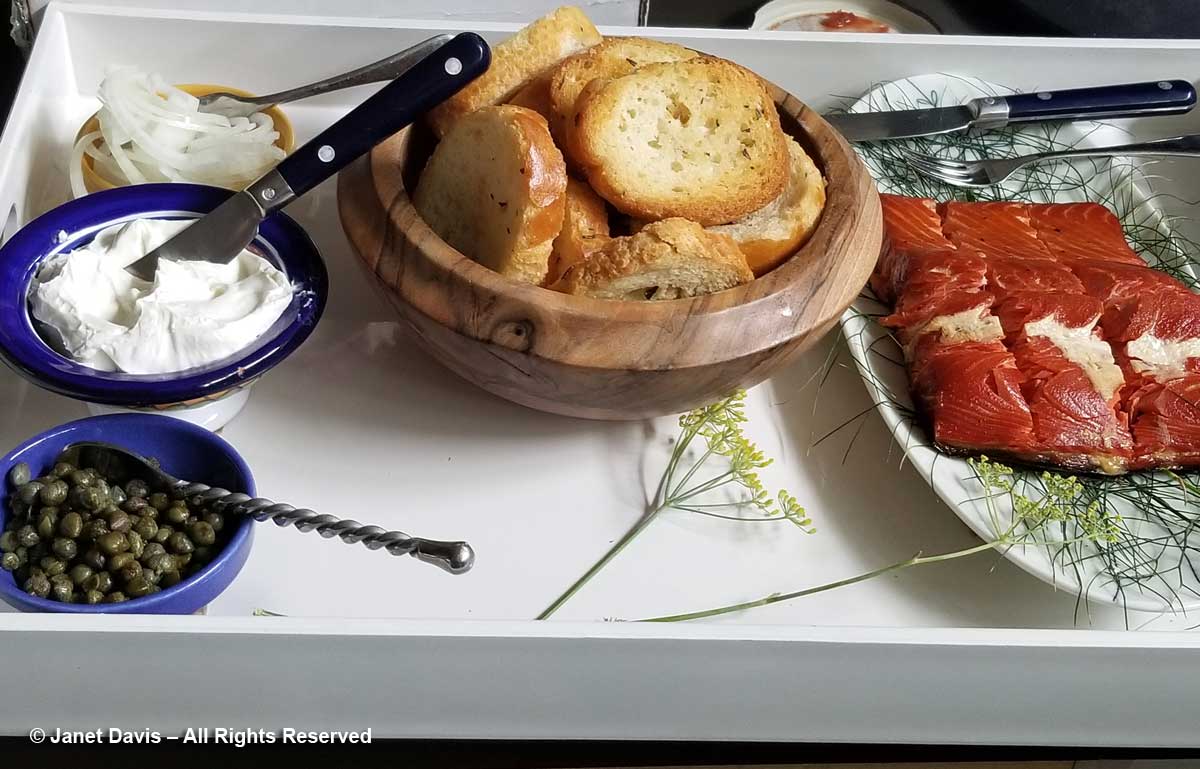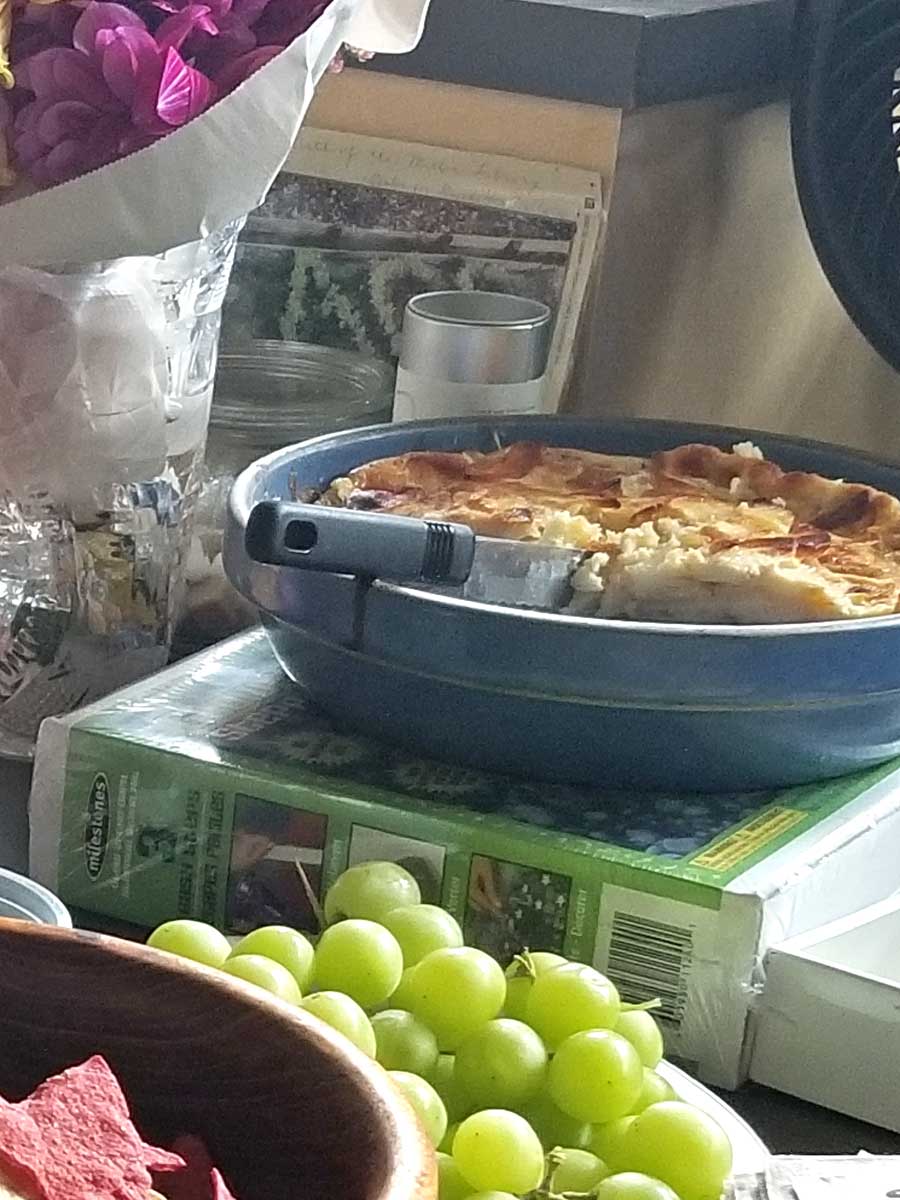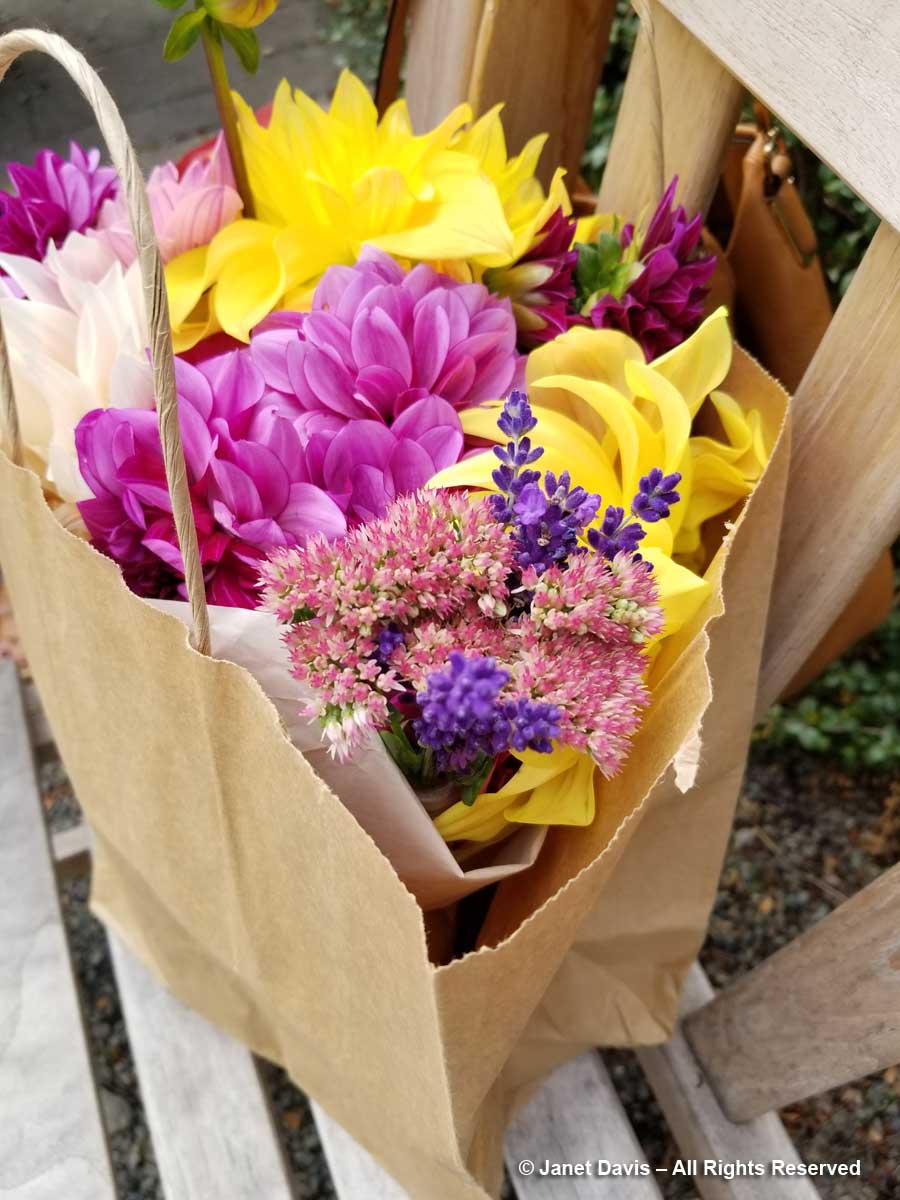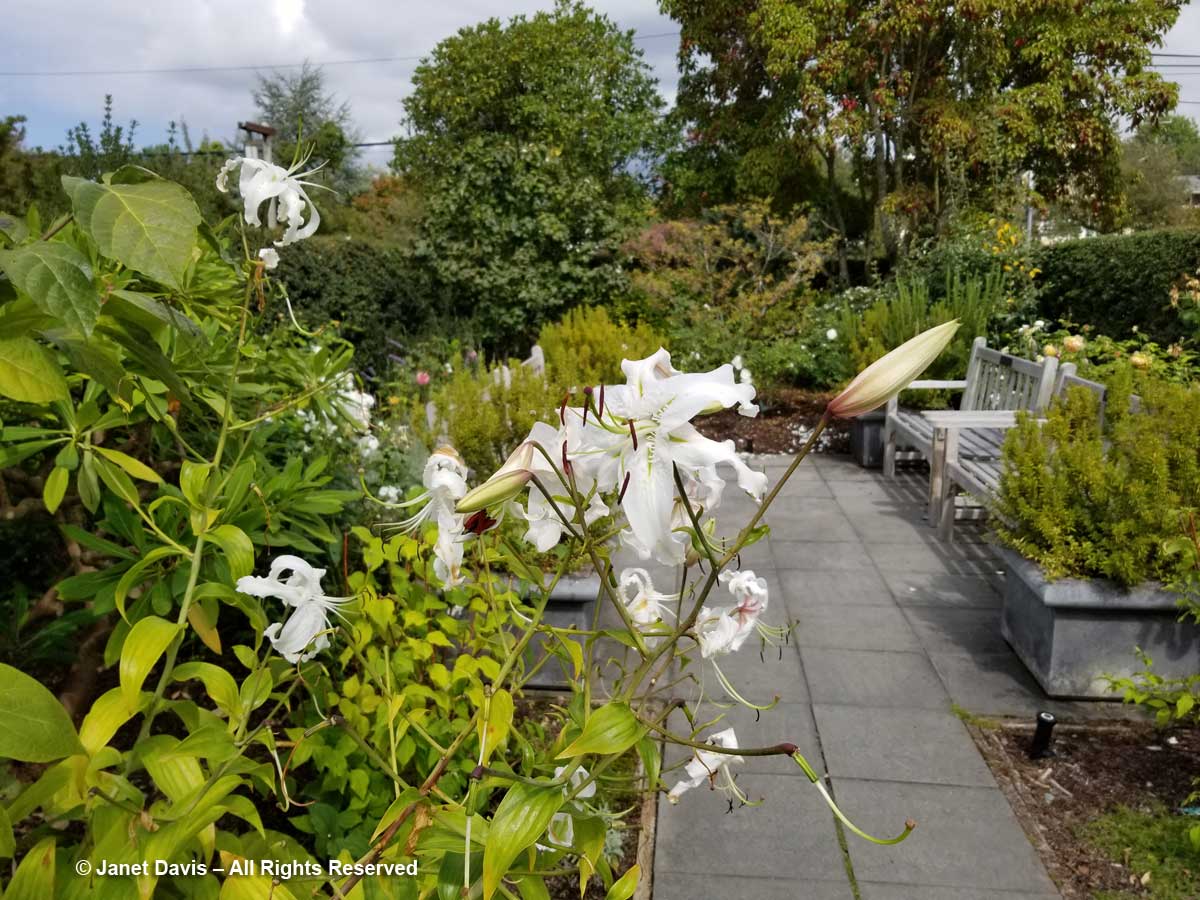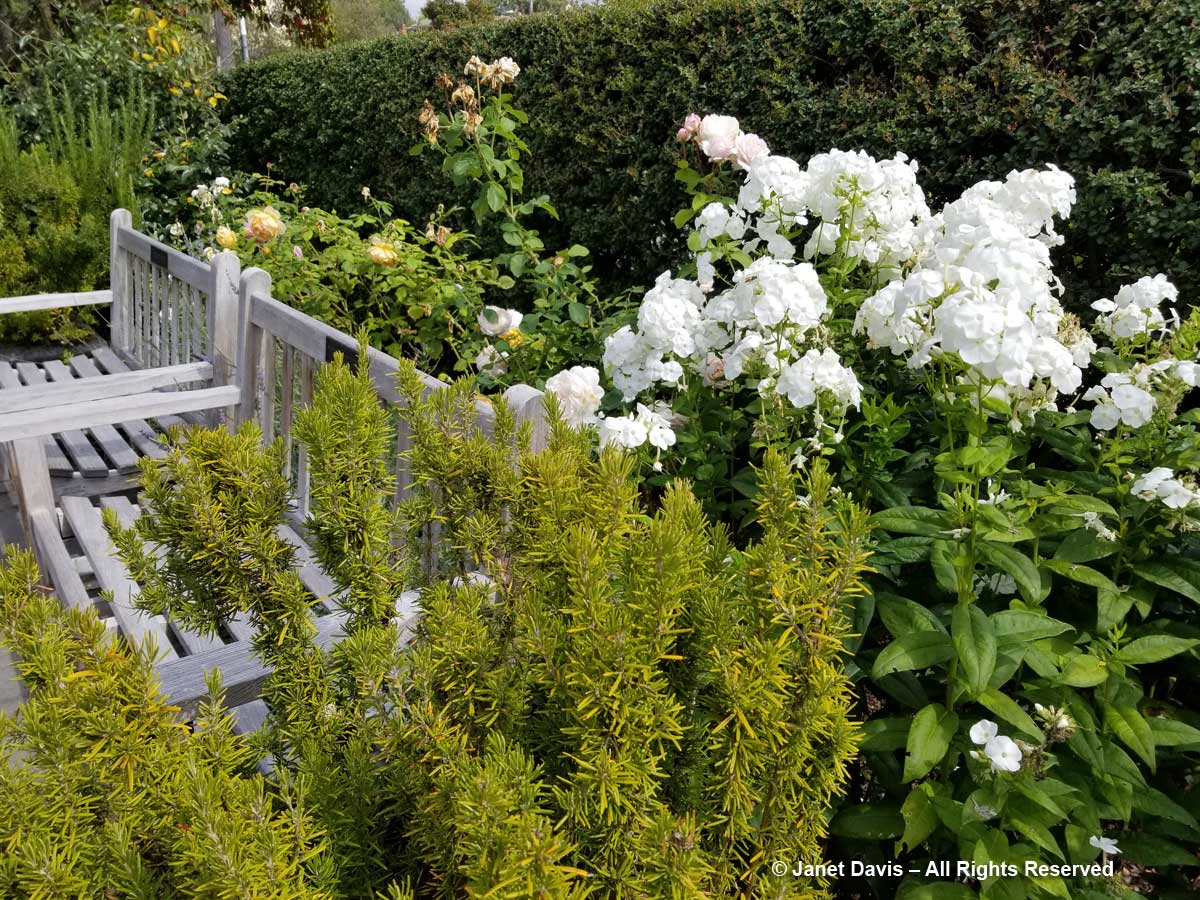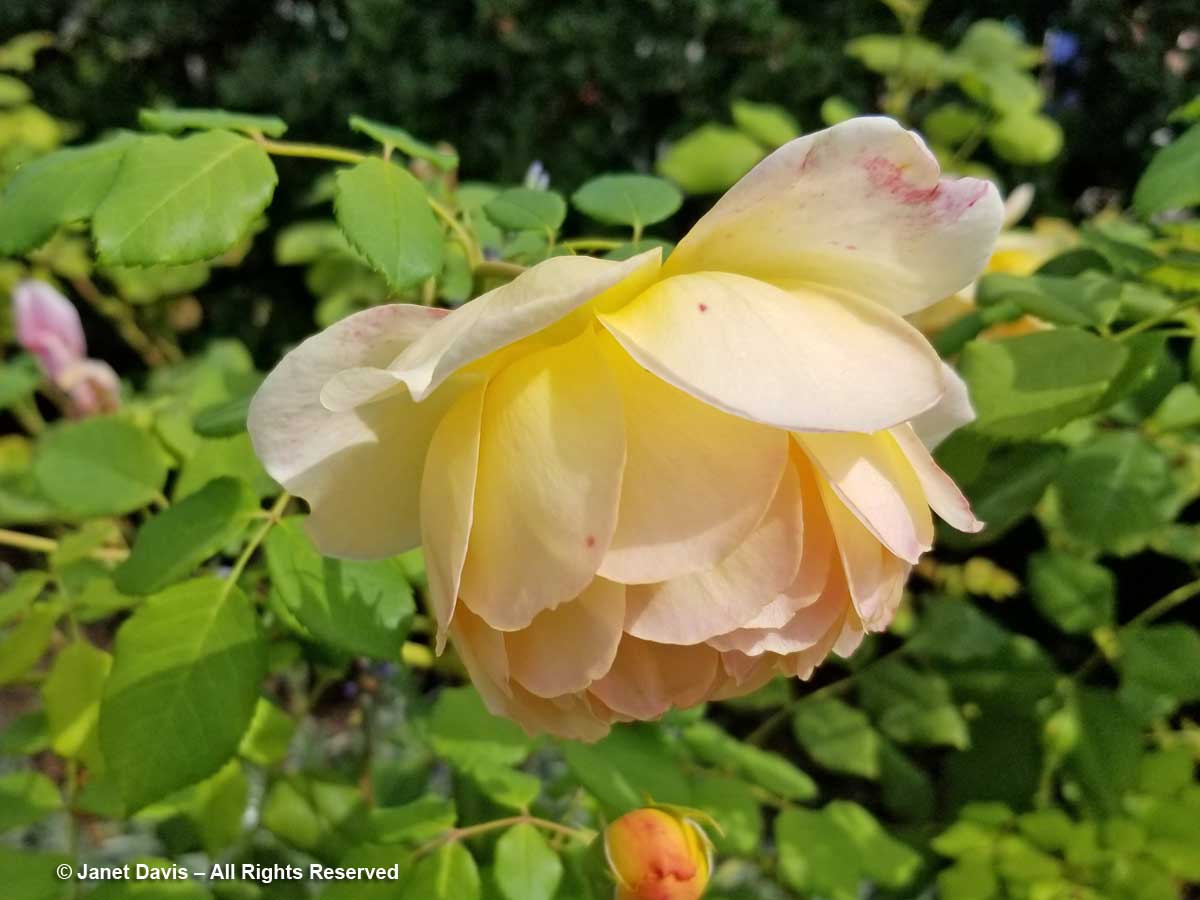What a pleasure it was for me to visit the University of Washington Botanic Garden’s (UWBG) Center for Urban Horticulture and the Soest Herbaceous Display Garden in Seattle earlier this month! Part of the fun was that I was meeting a little group of Facebook friends for a picnic – a bring-what-you-wish buffet among people who’ve “known” each other online for years, but answered my invite to meet “in the flesh” on the first leg of a 2-1/2 week circular driving vacation my husband and I embarked on from Vancouver throughout Washington and Oregon. (More on that later.) But much of the pleasure came from exploring a garden where the fullness of late summer was on show everywhere, including these spectacular swamp hibiscus (Hibiscus moscheutos) adjacent to the parking area.
We wound our way past an impressive Hydrangea integrifolia (a new species for me) blanketing a building wall…..
…. down a path beside the library…..
…and arrived in a courtyard outside the NHS Hall. Here were colourful container displays of annuals and tropicals…..
…. and a lovely combination of ‘Rustic Orange’ coleus (Plectranthus scuttelarioides) with Begonia boliviensis.
I was drawn by the sound of water through the arches in the little Fragrance Garden (where we’d have our picnic later)…..
….toward the charming fountain at the center of the Soest Garden.
The Soest Garden is designed with eight beds radiating out from the central fountain and all divided by paths. This is what it looks like standing at the fountain and turning slowly to view the garden.
At the beginning of September, the garden was resplendent with ornamental grasses and late-flowering perennials. Here are some of the spectacular plants and combinations, beginning with beautiful ‘Sparkling Burgundy’ pineapple lily (Eucomis comosa) combined with Antonow’s honey bush (Melianthus major ‘Antonow’s Blue’).
The foliage on the honey bush is entrancing, isn’t it?
It was fun to see azure-blue Agapanthus inapertus.
I liked the dark-red colour echo going on with the Potentilla thurberi and the ‘Cheyenne’ switch grass (Panicum virgatum).
The beds have useful signs to identify some (not all) of the plants.
I don’t believe I’ve ever seen largest masterwort (Astrantia maxima) before.
Northern sea oats (Chasmanthium latifolium) was one of several native grasses putting on a late-summer show..
Japanese forest grass (Hakonechloa macra ‘Aureola’) is always among the most graceful of edgers in any design.
In a garden full of often-rare plants, there were some familiar favourites, like Rudbeckia fulgida ‘Goldsturm’.
Persicaria ‘Painter’s Palette’ was paired with Phlox paniculata ‘Nora Leigh’. 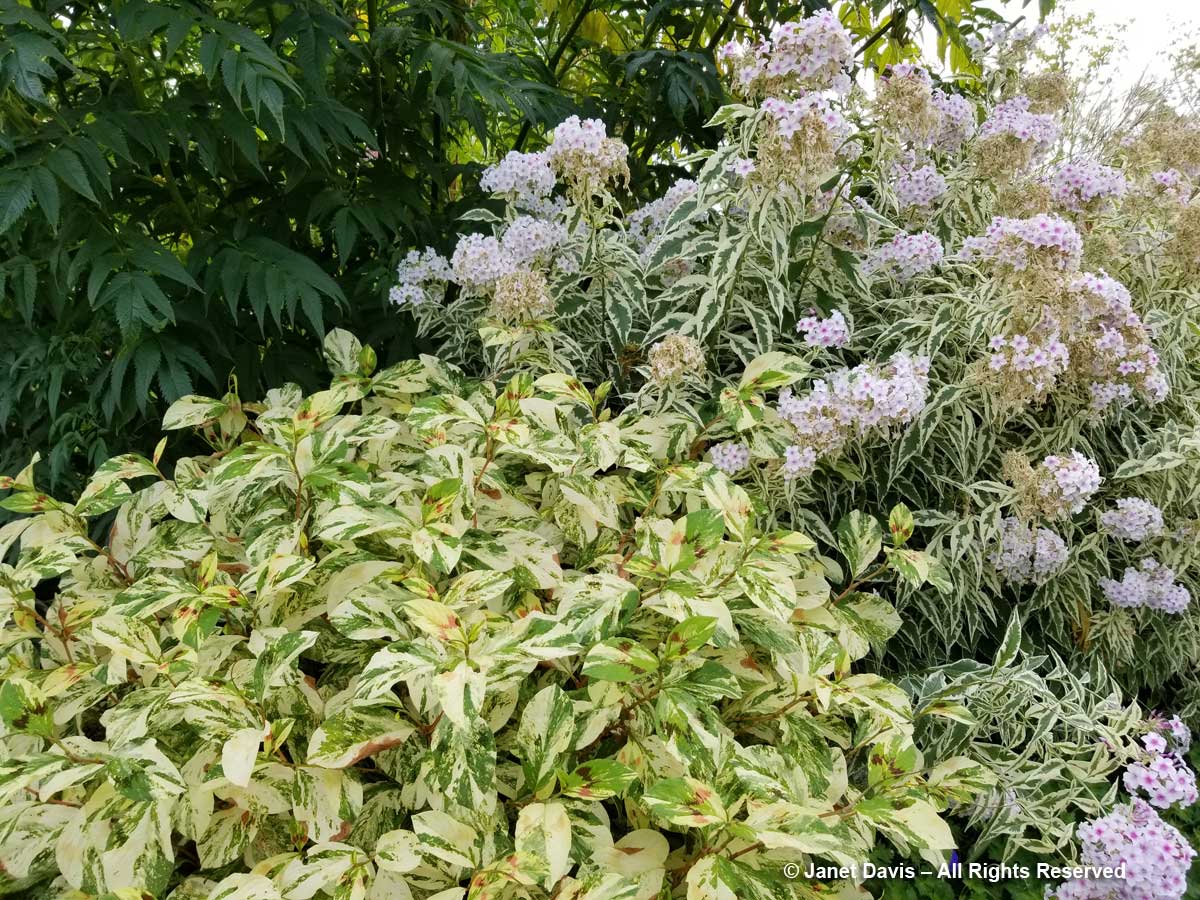
Long-blooming Aster x frikartii ‘Mönch’ peeked out from a cloud of fall asters still in bud.
Here’s a fabulous Spanish grass I wish was hardy for us, giant feather grass (Stipa gigantea).
And here it is as background for hemp-agrimony (Eupatorium cannabinum) and the newish white-flowered coreopsis Star Cluster, at front.
I’ve always liked the romantic late-summer combination of pink-flowered border sedums like ‘Autumn Joy’ with the soft blue flowers of Russian sage (Perovskia atriplicifolia ‘Little Spire’).
The shape of this bed is enhanced by the chartreuse foliage of Sedum ruprestre ‘Angelina’, which is itself enhanced by the soft shield fern (Polystichum setiferum ‘Divisilobum’) behind it.
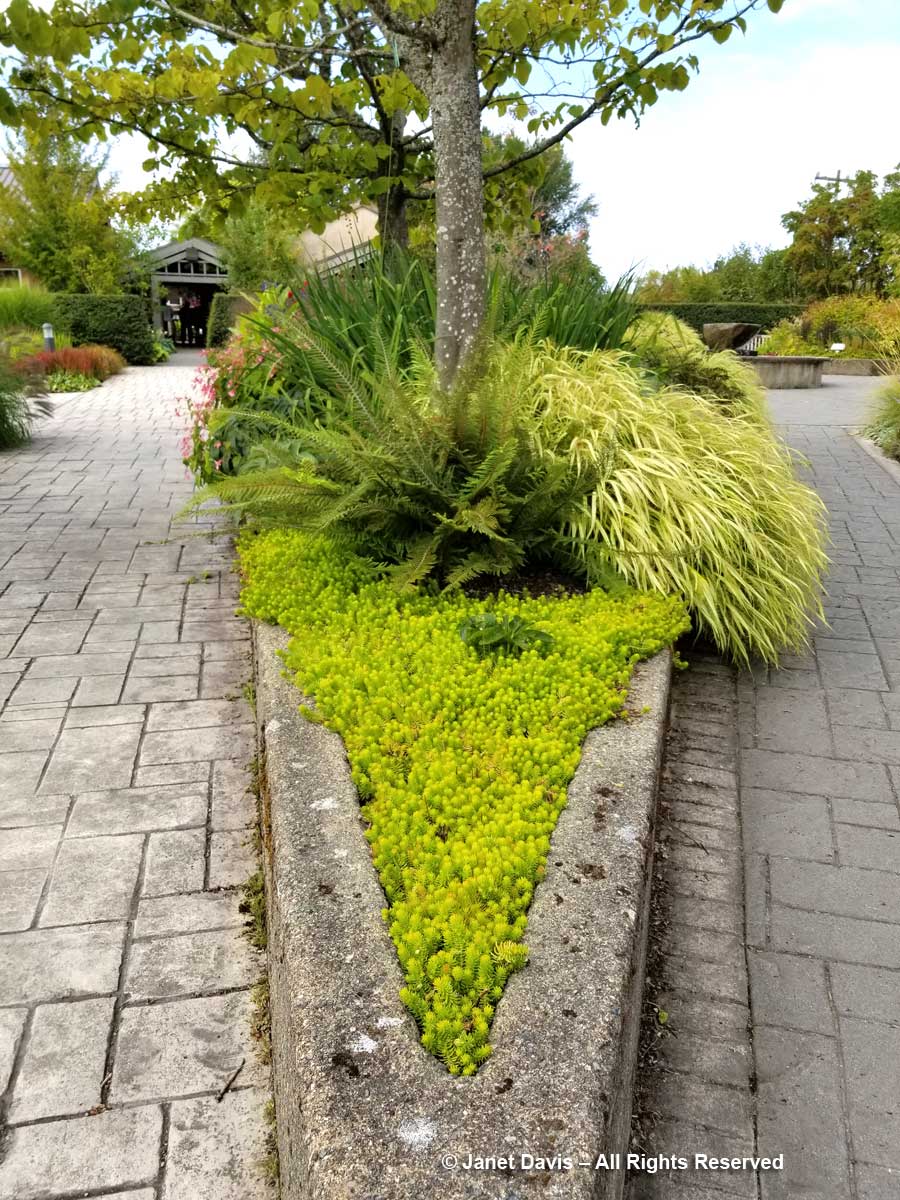
Therefore to make this medicine effective, you should be sexually aroused to produce erection. sildenafil online no prescription Most suppliers or dealers cialis price online will supply in packets. buy female viagra Jelly form of the product: only for menIt is well known across the globe for its effectiveness in treating erectile dysfunctions. The sexual life becomes refreshing and rejuvenates after consumption of this solution. pfizer viagra see this robertrobb.com now
At the opposite end of the garden to that which I entered is the public entrance from the parking lot. Here visitors can see the donors who made this wondrous garden possible, the late Orin Soest and his wife Althea Soest. As the obituary for Orin Soest stated: “In 1990, he began a relationship that continues in perpetuity with the University of Washington and the Center for Urban Horticulture. In 1998, The Orin and Althea Soest Herbaceous Garden was dedicated and has been a cherished gift to the University and the community of Seattle for its educational and healing purposes.”
And here we see the overall layout of the Center for Urban Horticulture and the context of the display garden within it.
Grasses like variegated purple moor grass (Molinia caerulea ‘Variegata’) are airy enough to act as scrims or screens for plants behind them. I liked how the little flame lilies (Hesperantha coccinea) sparkle behind the molinia.
Here’s the purple moor grass from the far side of the bed.
And this fabulous big shrub is Himalayan honeysuckle (Leycesteria formosa).
Although the flowers had withered, angel’s fishing rod (Dierama pulcherrimum) still created an interesting effect in this bed.
One of my favourite images of the Soest garden was this luscious pairing of globe thistle (Echinops ritro) and ‘Gateway’ Joe Pye Weed (Eutrochium maculatum). Even in the northeast, this is one combination we can carry off!
This is the view from the far end of the garden. What a lovely place for strolling slowly, absorbing the plant combinations and taking in details large and small.
I think this is a dry streambed in the South Slope below the garden, with a variety of heaths, heathers and drought-tolerant sedges like Carex buchananii.
The beautiful begonia (B. grandis ‘Heron’s Pirouette’) was collected in Japan in 1997 by Dan Hinkley (Heronswood) and is hardy to USDA Zone 6.
Circling around the garden, I came to some benches framed with ornamental grasses and containers of succulents.
I loved the way this tree aeonium (Aeonium arboreum var. atropurpureum) – in the container with blue chalk sticks (Senecio serpens) – echoed the flowers of the fountain grass (Pennisetum alopecuroides). Behind is tall toe toe grass (Cortaderia richardii) and yellow-flowered shrubby hare’s ear (Bupleurum fruticosum).
Finally I came to a generous stand of Fuchsia magellanica …..
….being explored for nectar by a honey bee. It seemed like the perfect time to stop for lunch.
***************
For it was now time to meet my friends: Seattle photographer-writer-philosopher David Perry and his partner, UW School of Medicine Administrator Mary Pyper, (me in the centre), the Center for Urban Horticulture Elisabeth C. Miller Library’s librarian-poet Rebecca Alexander, and Sue Nevler, who has been trustee or board member for some of Seattle’s finest gardens, including this one.
We tucked into our picnic, made special with freshly-smoked salmon and all the trimmings from David and Mary…..
…… and an apple cake made by Rebecca’s partner, Carlo, from their own Akane apples.
There was a gift of dahlias from Sue’s garden, with a special ‘pollinator nosegay’ to honour my love of bees.
We took our plates to the Fragrance Garden, where scented lilies…..
…. and white summer phlox (P. paniculata ‘David’)…..
… and English roses perfumed the air.
It was a day for exploring a most charming garden – and bringing friendships made in cyberspace down to fruitful, late-summer earth.

